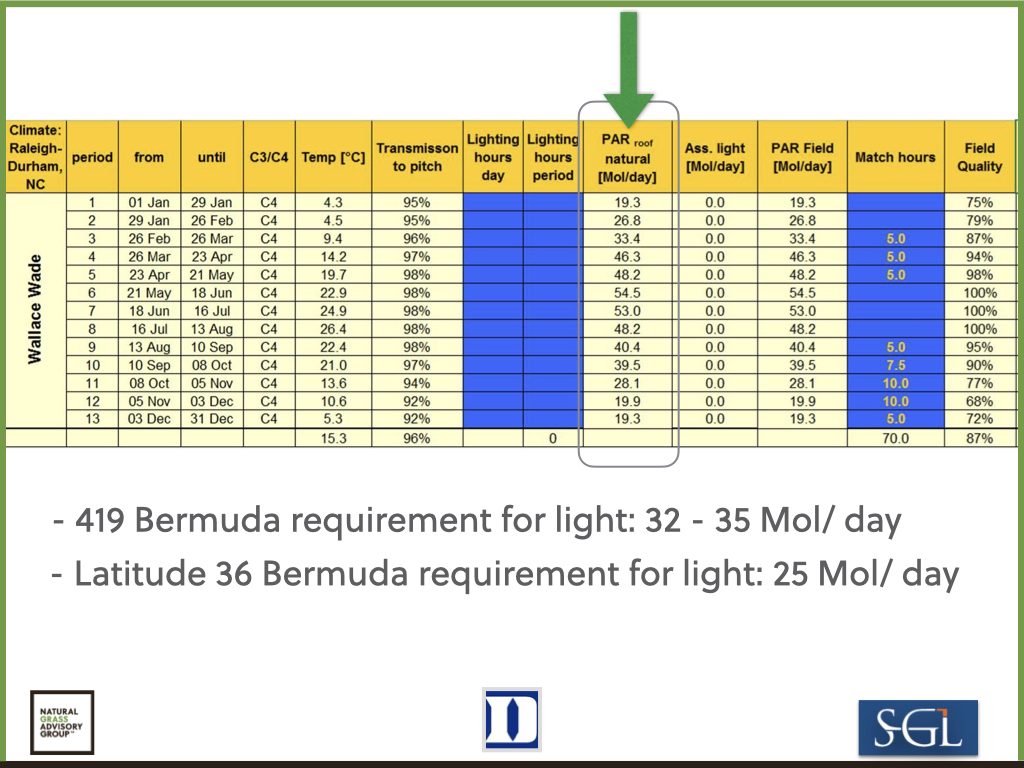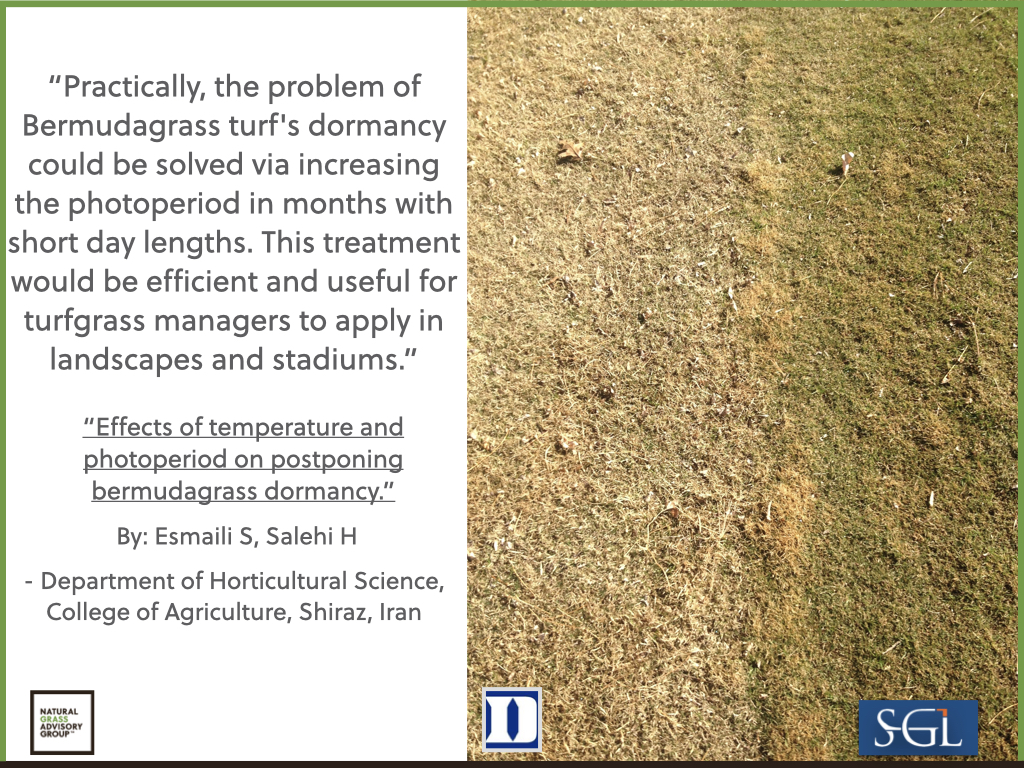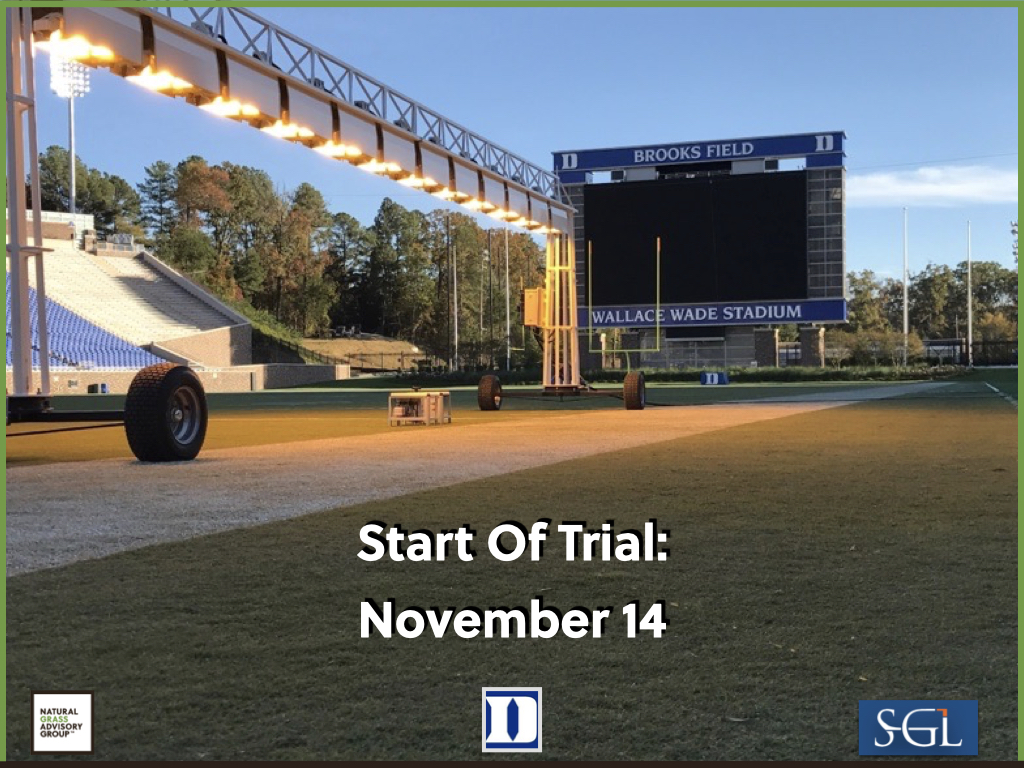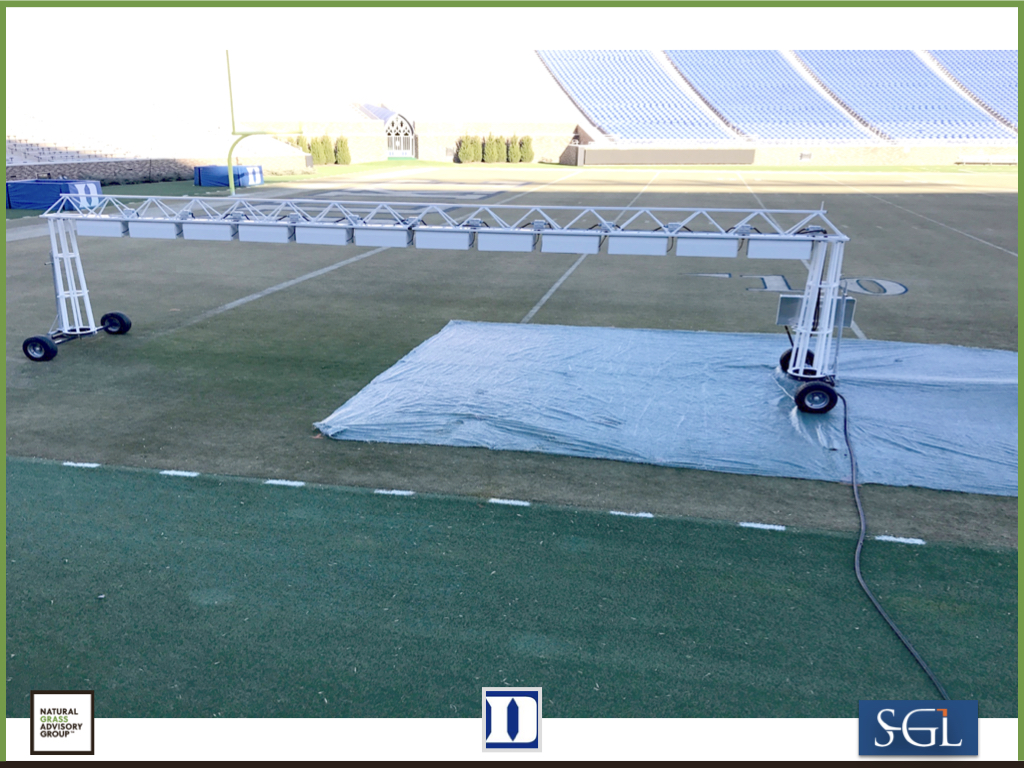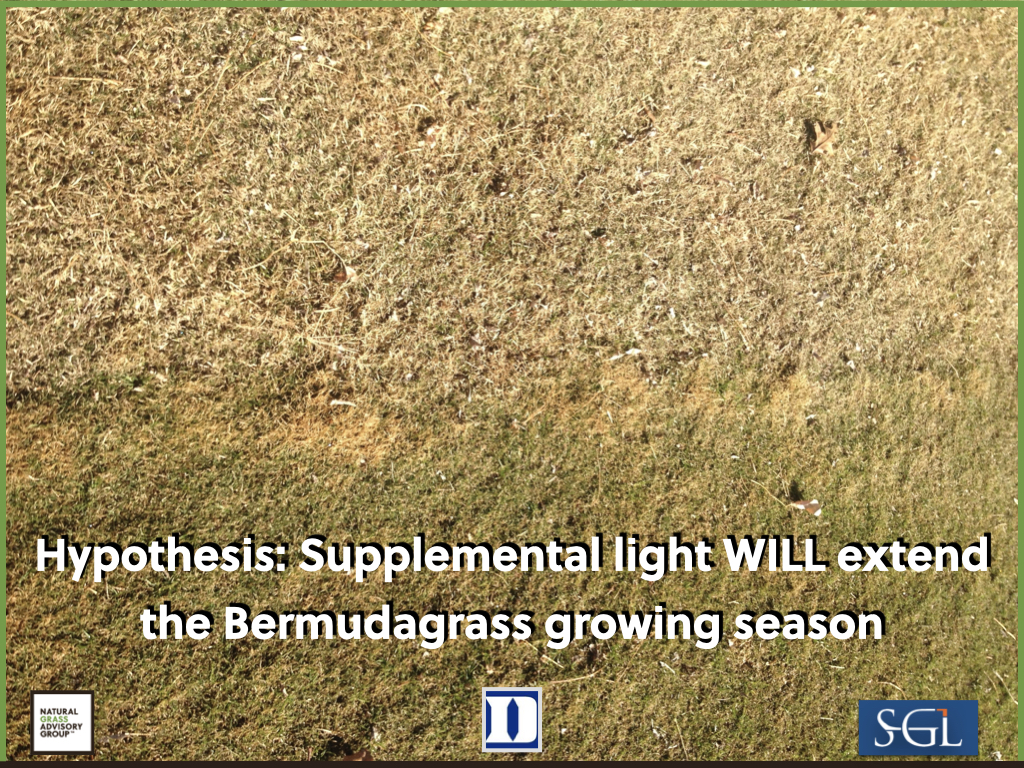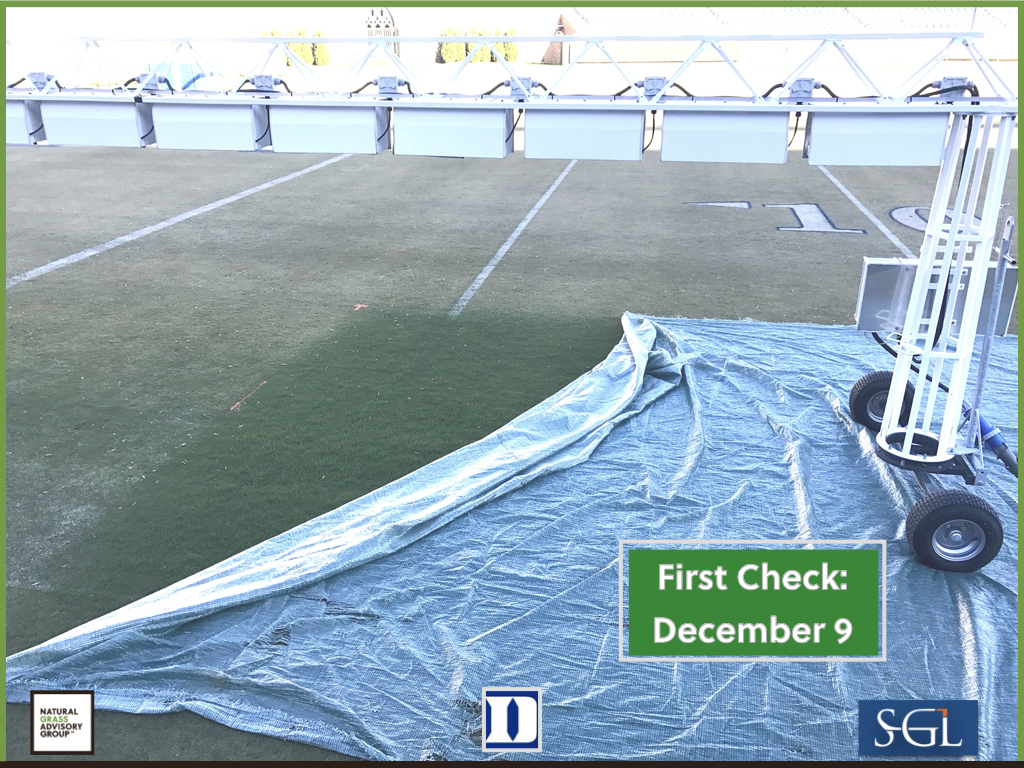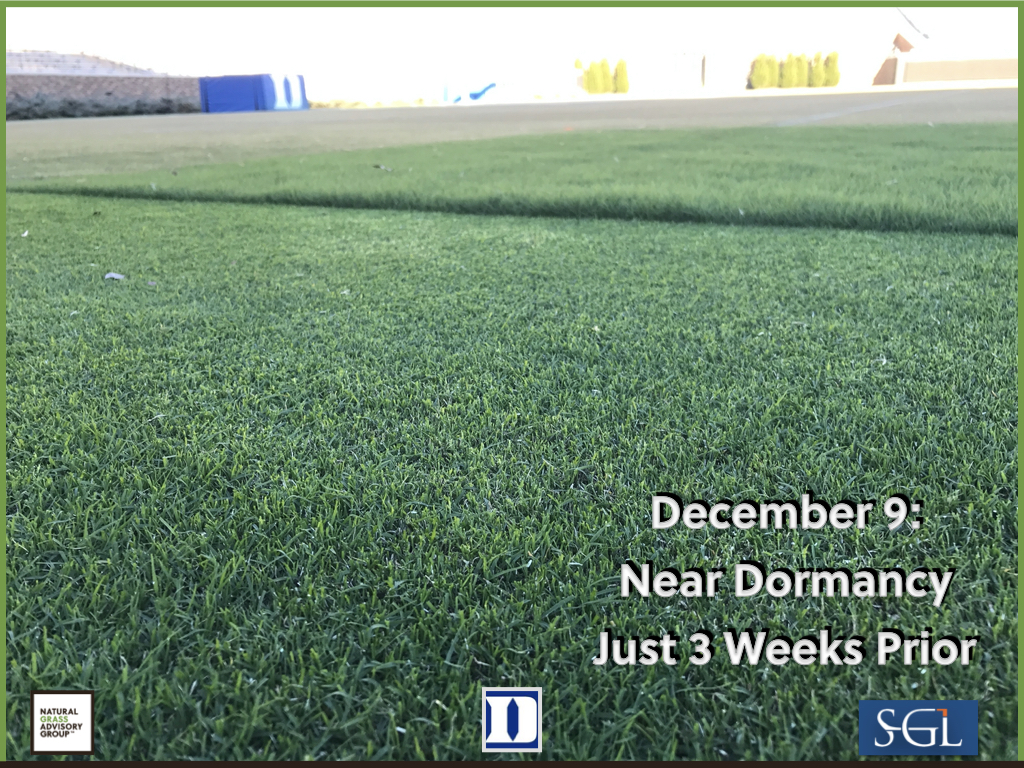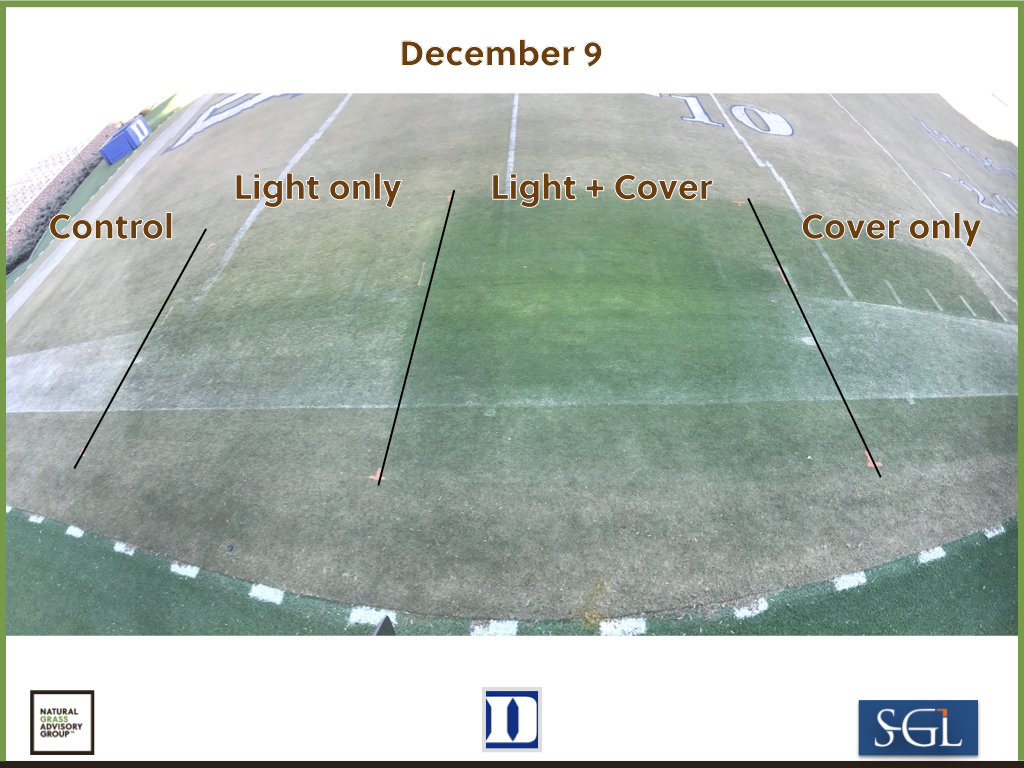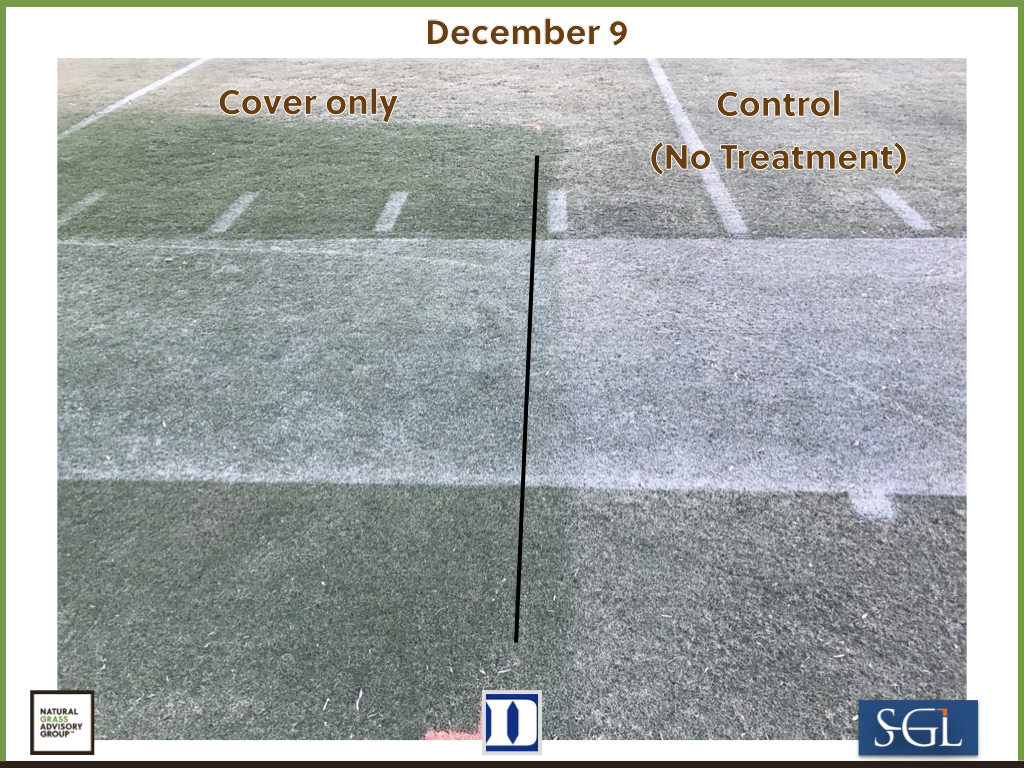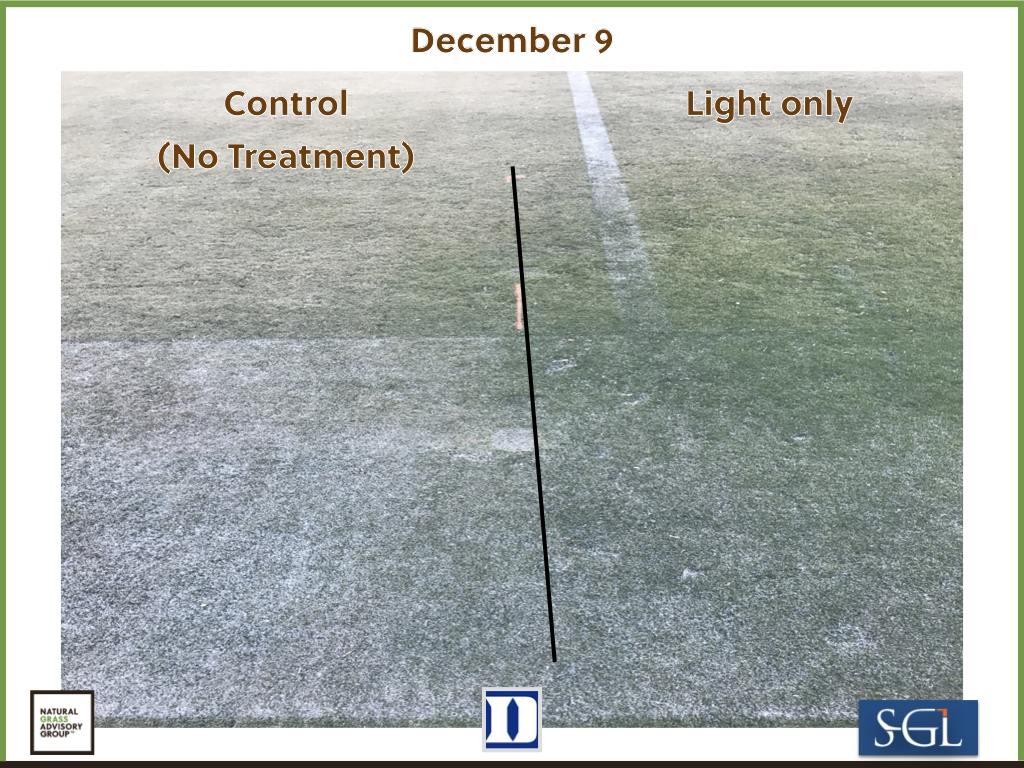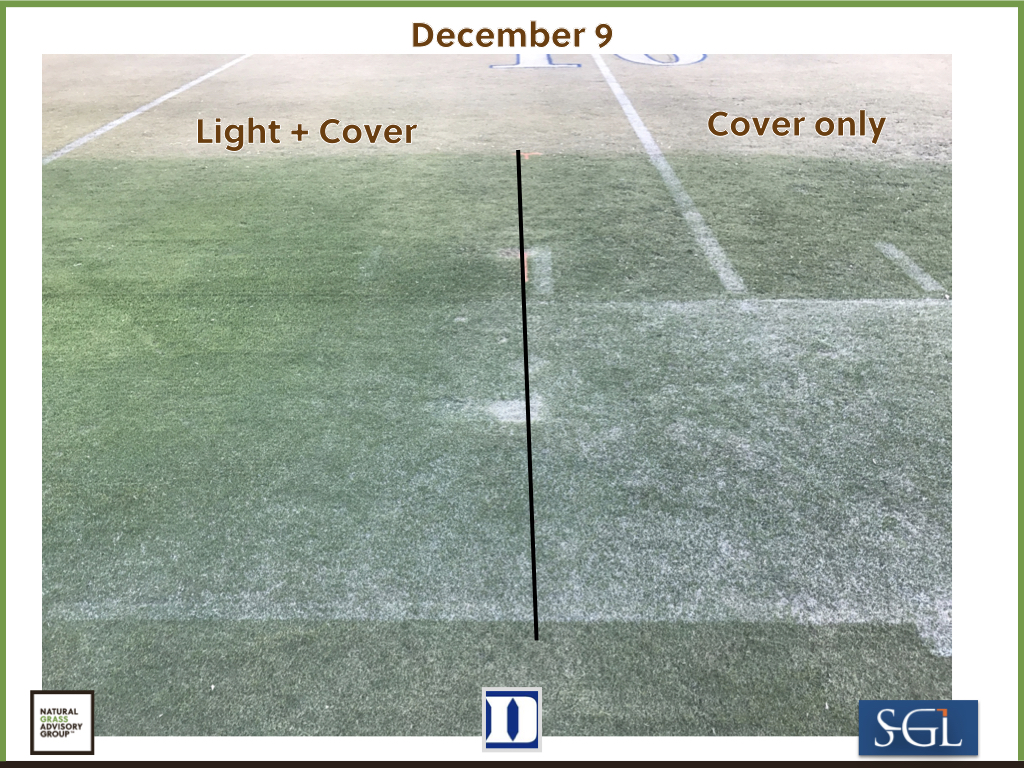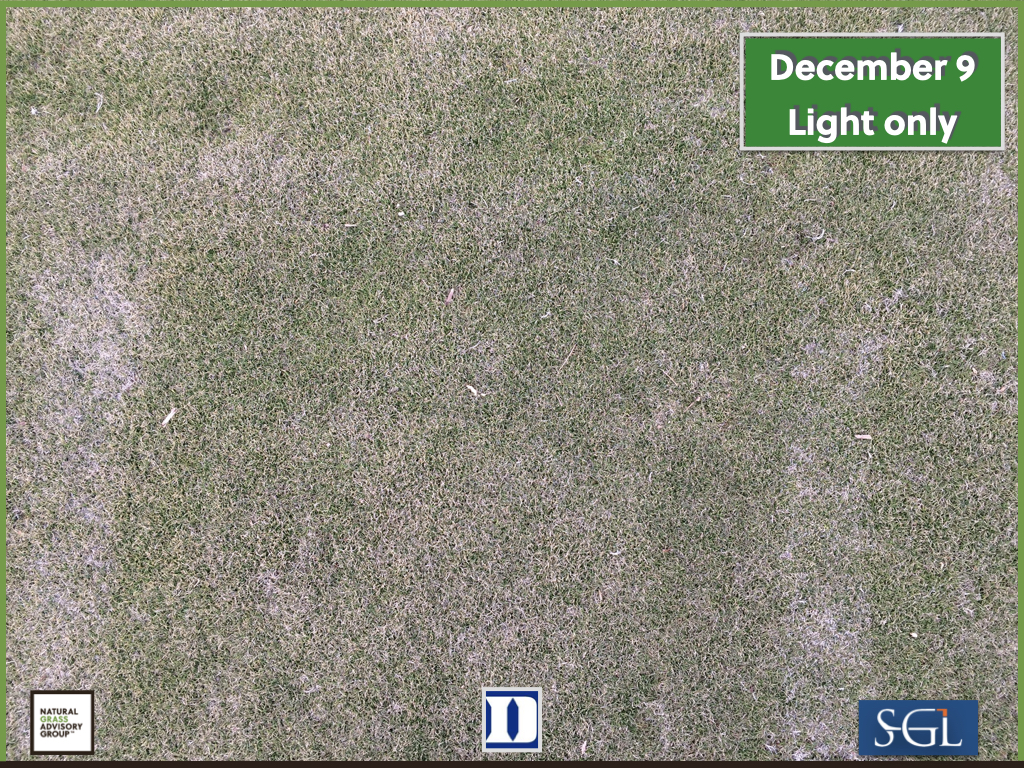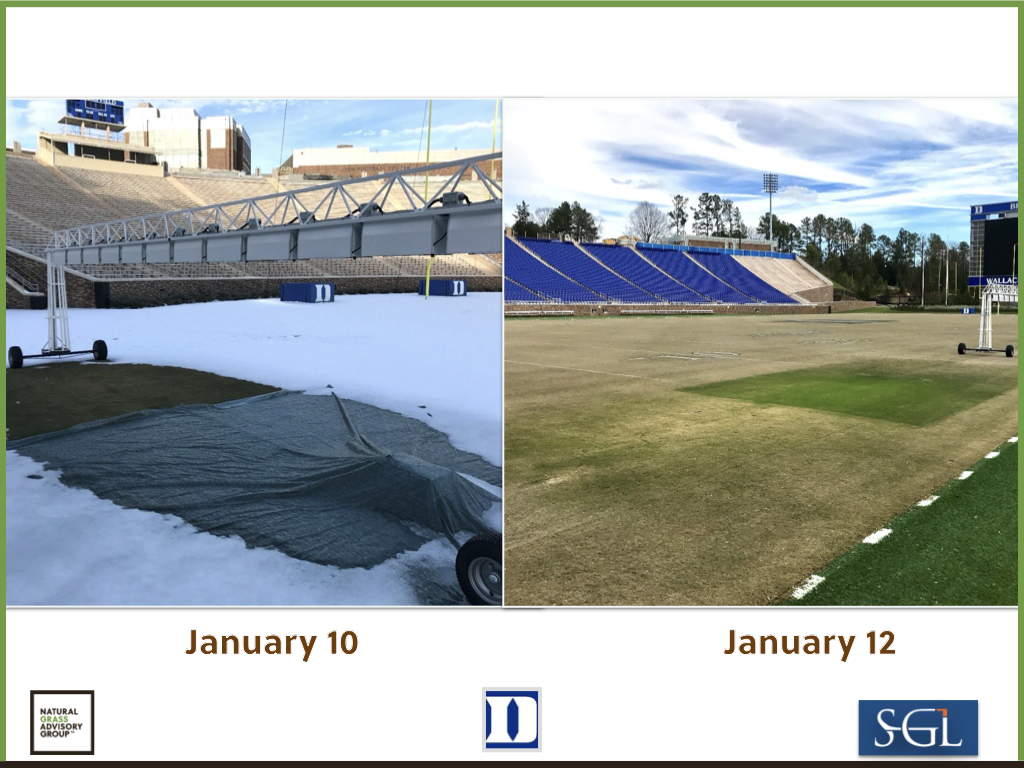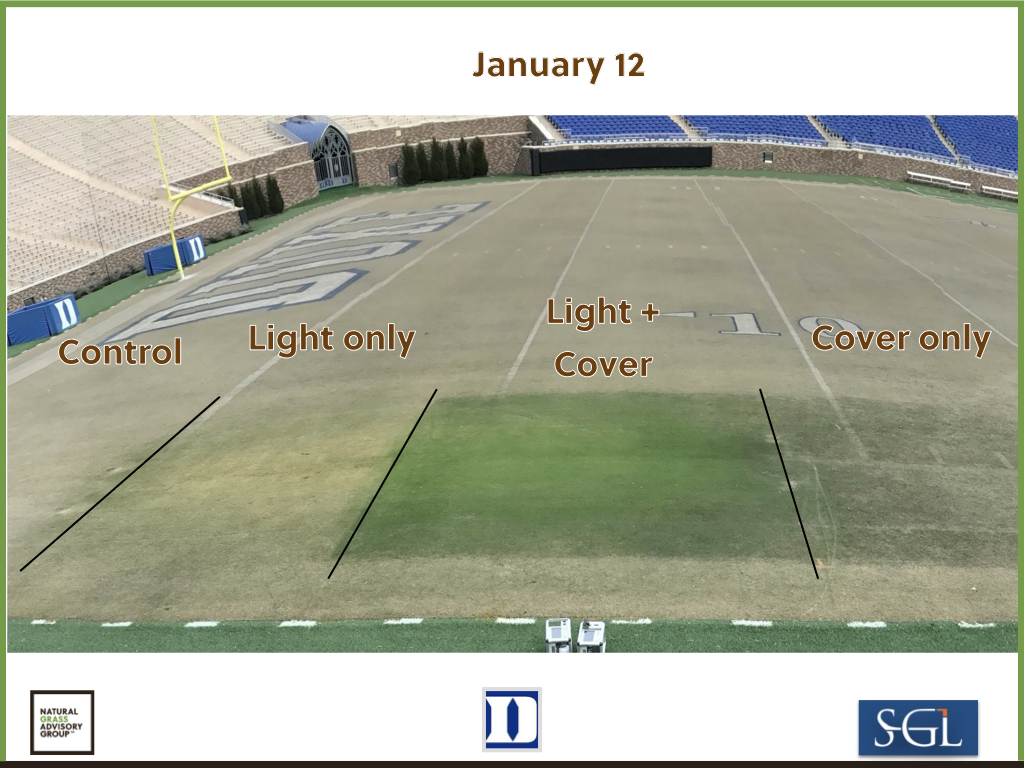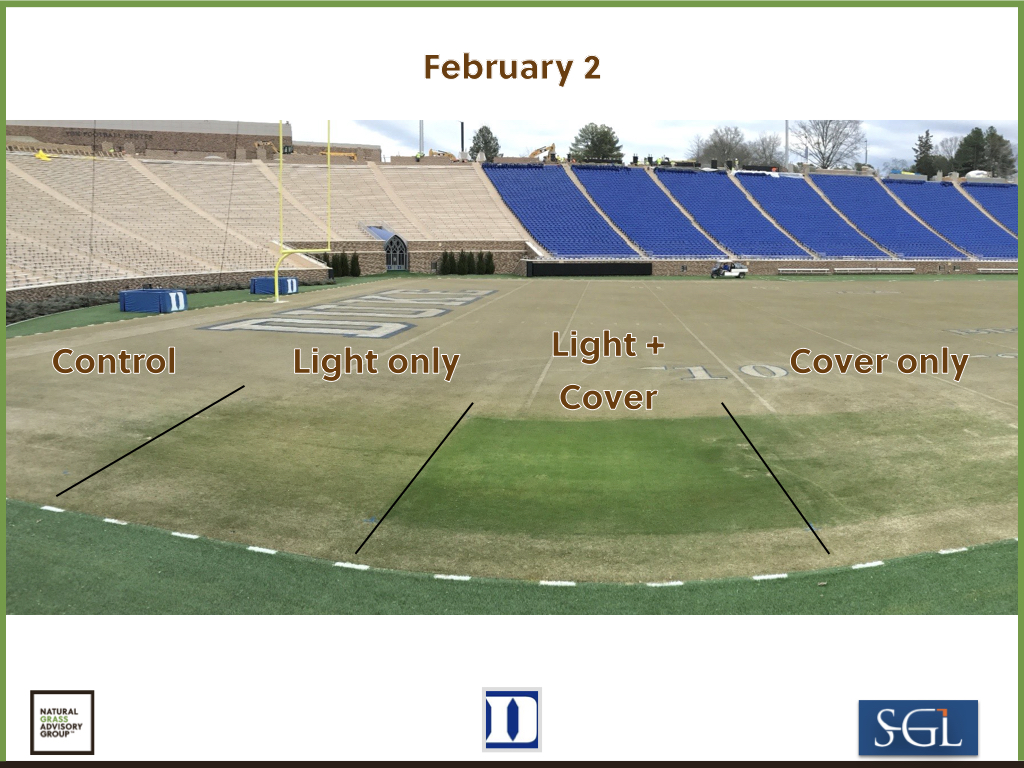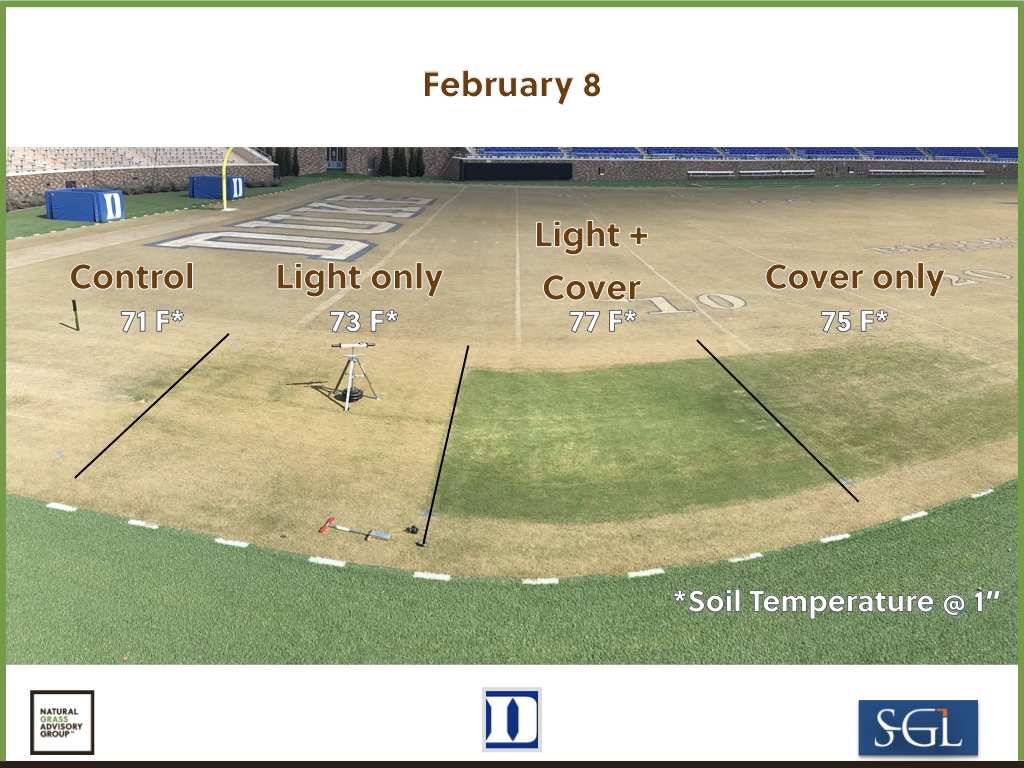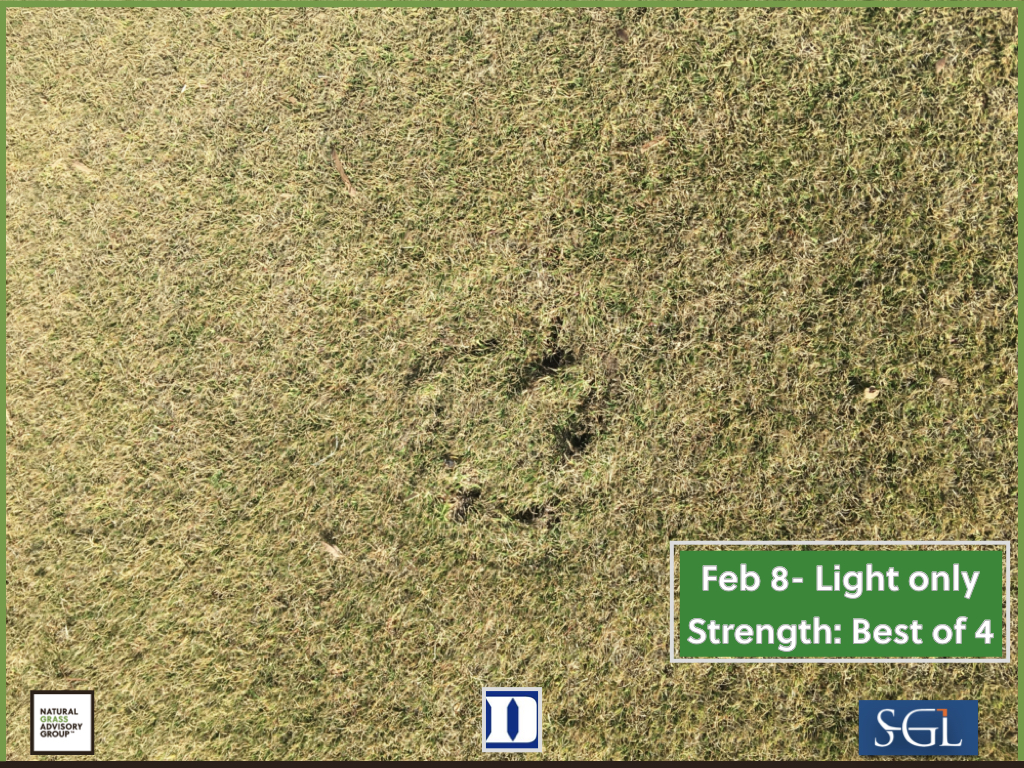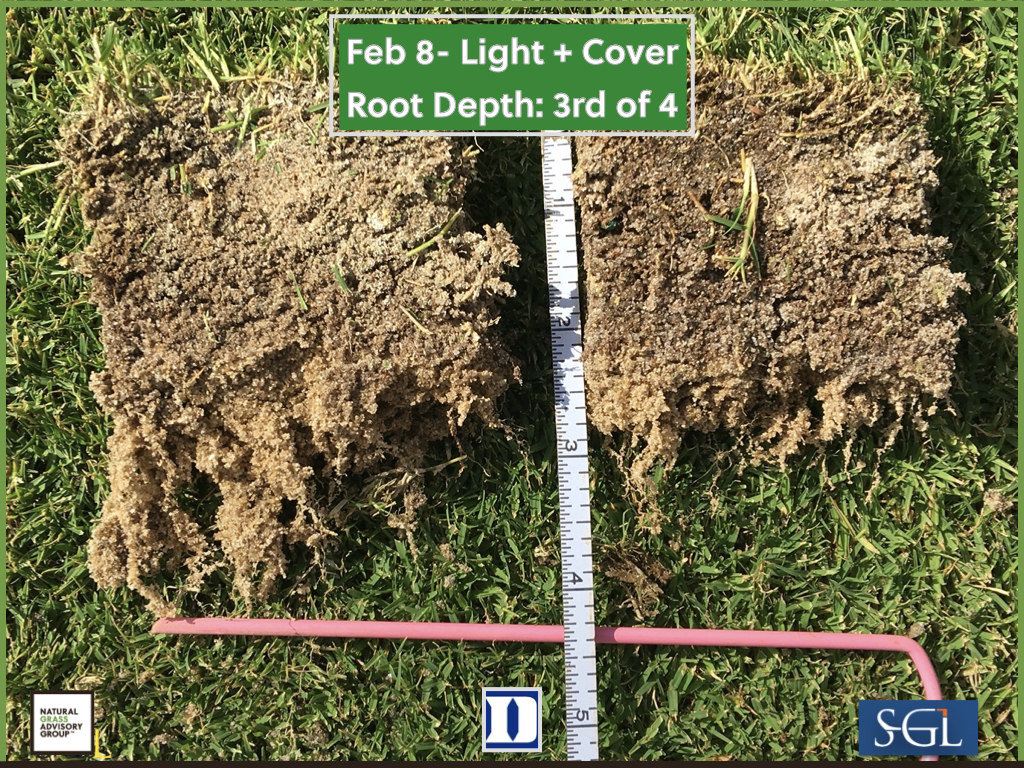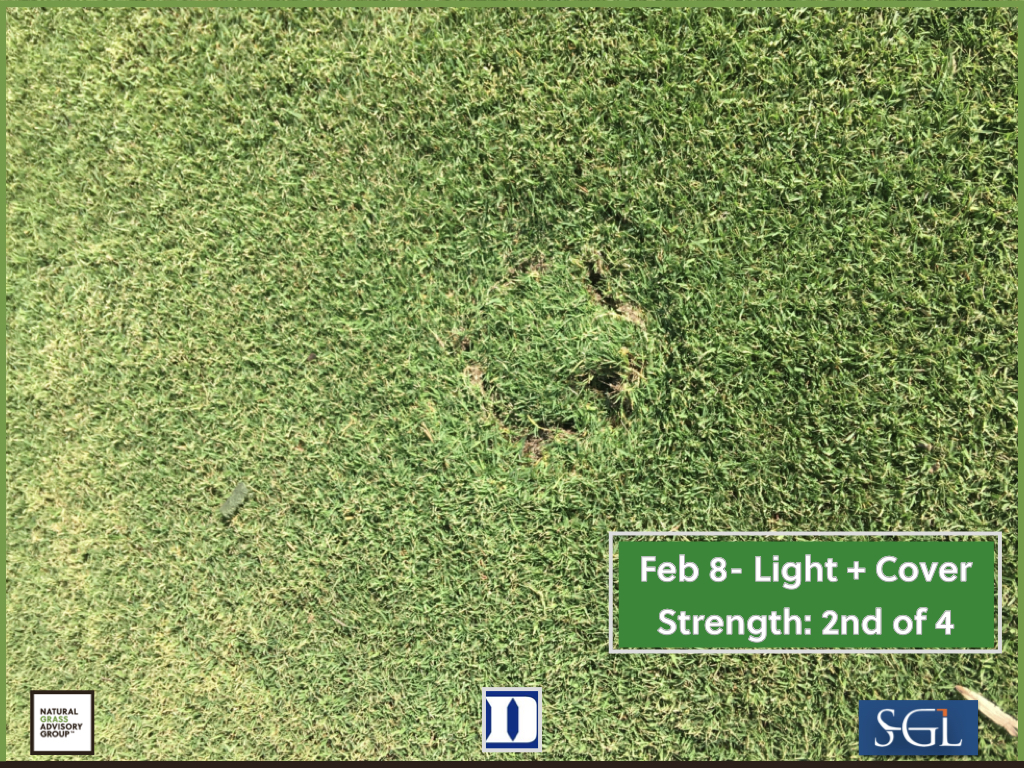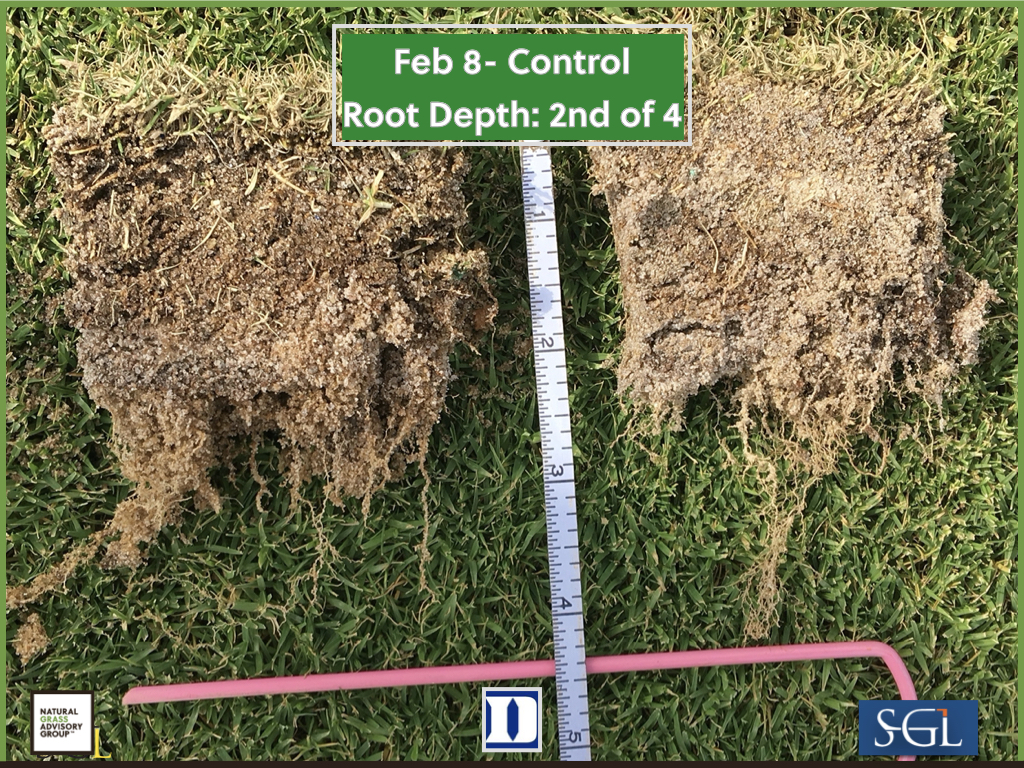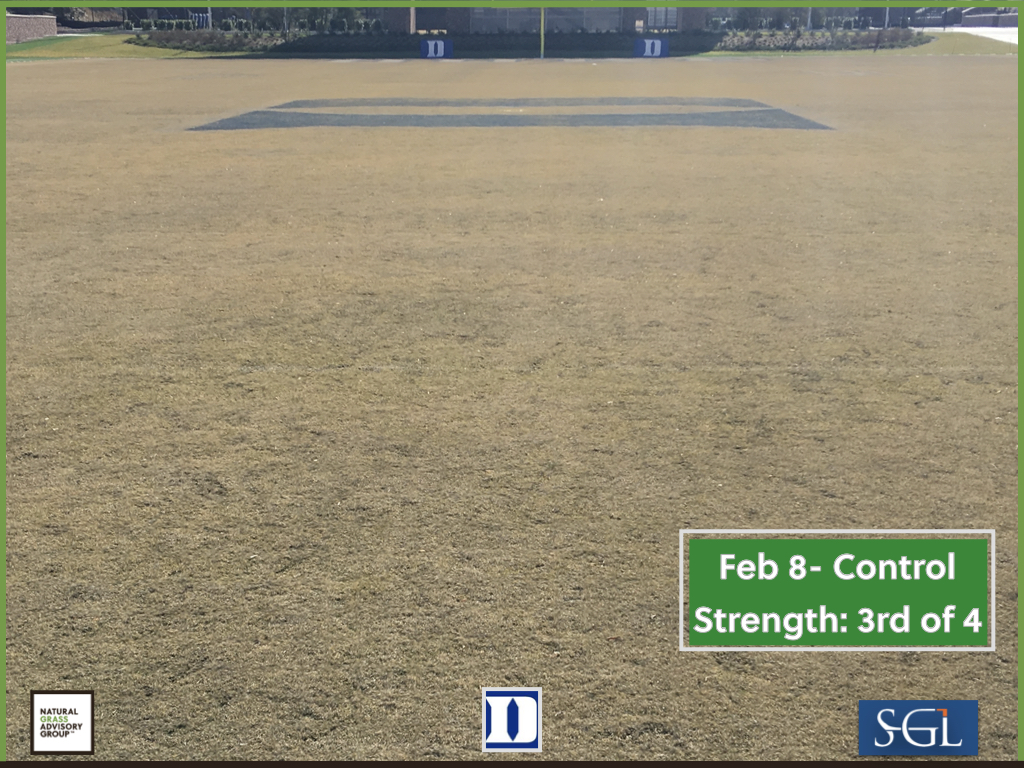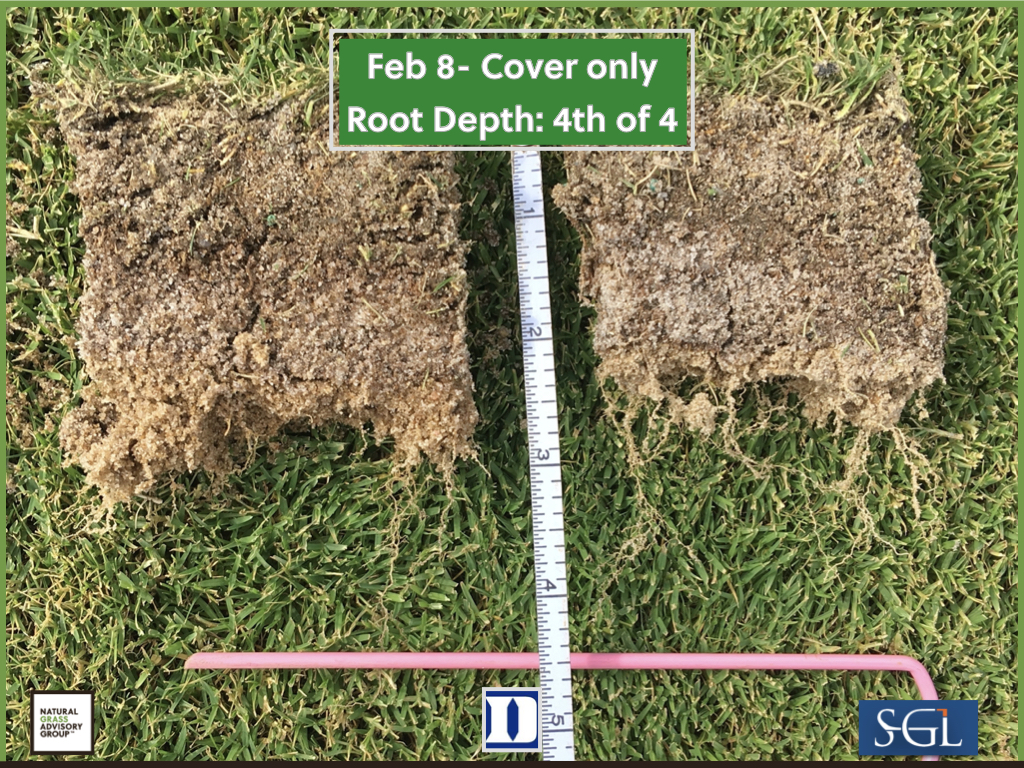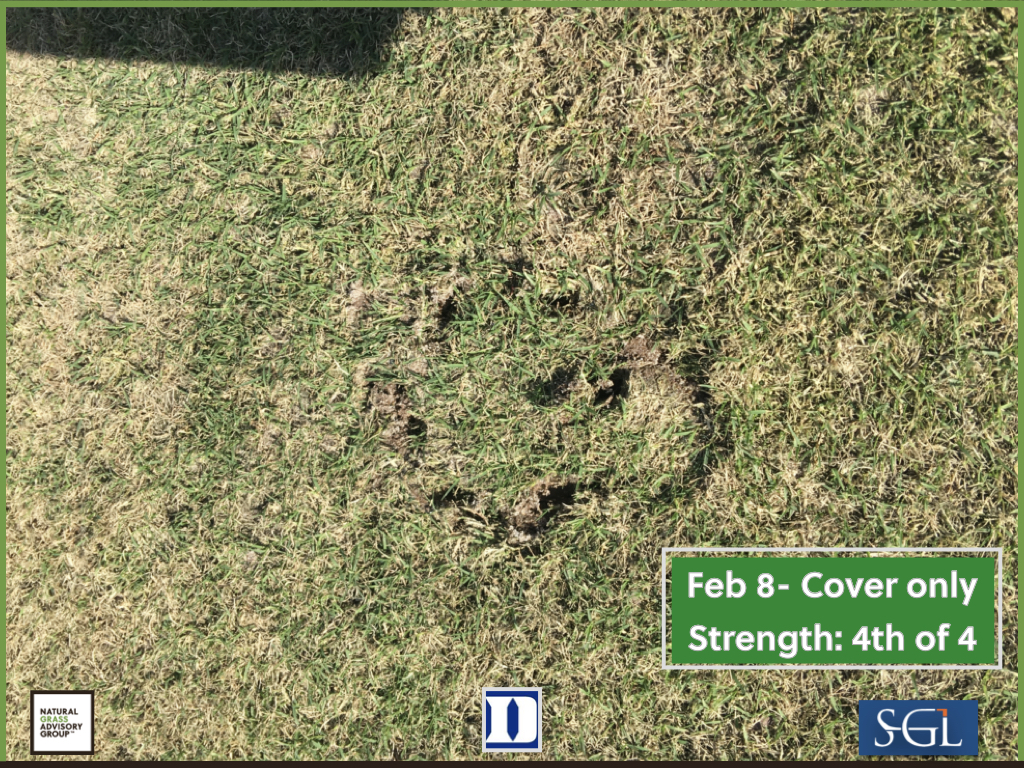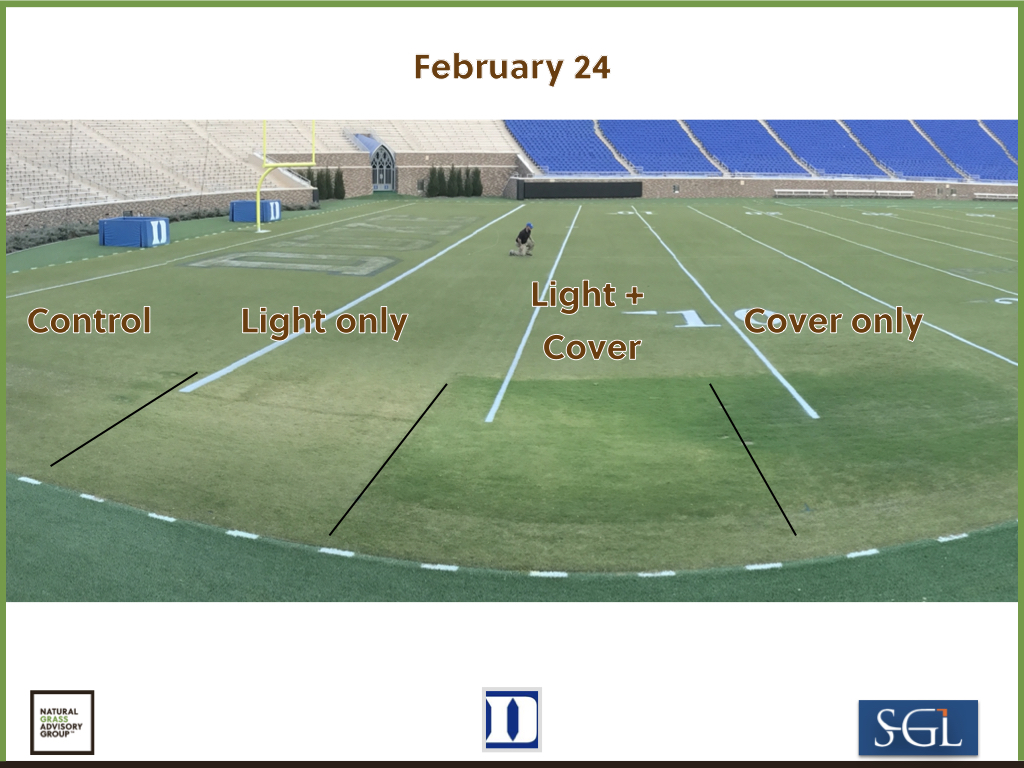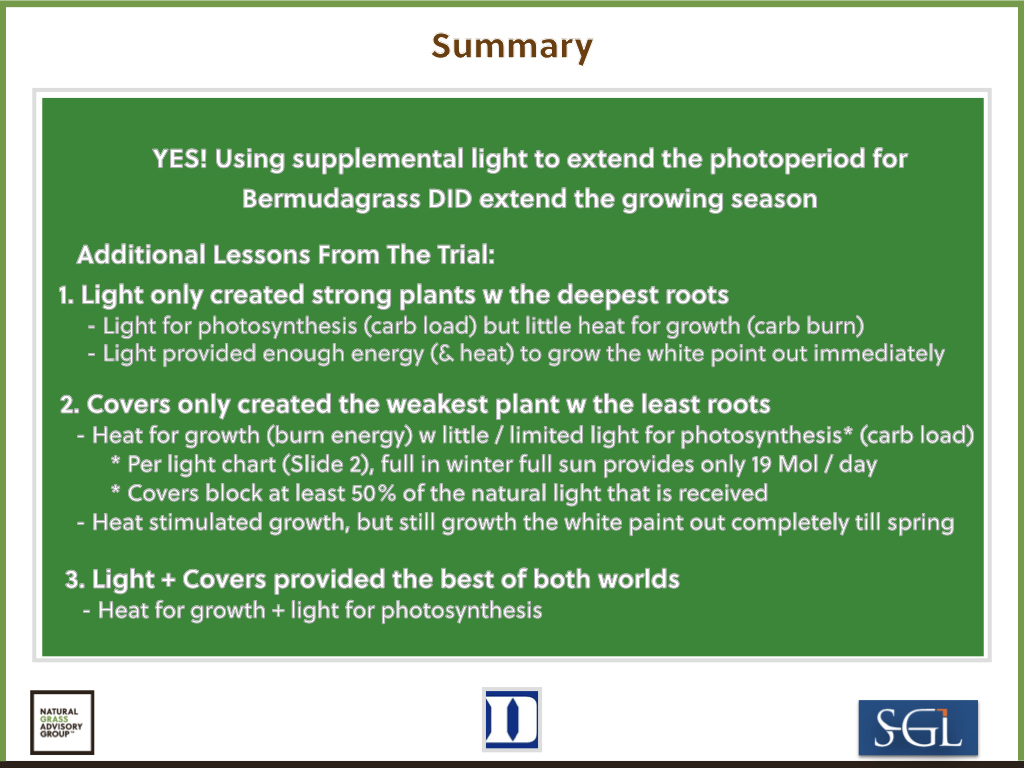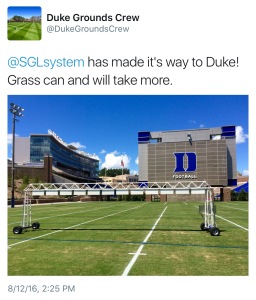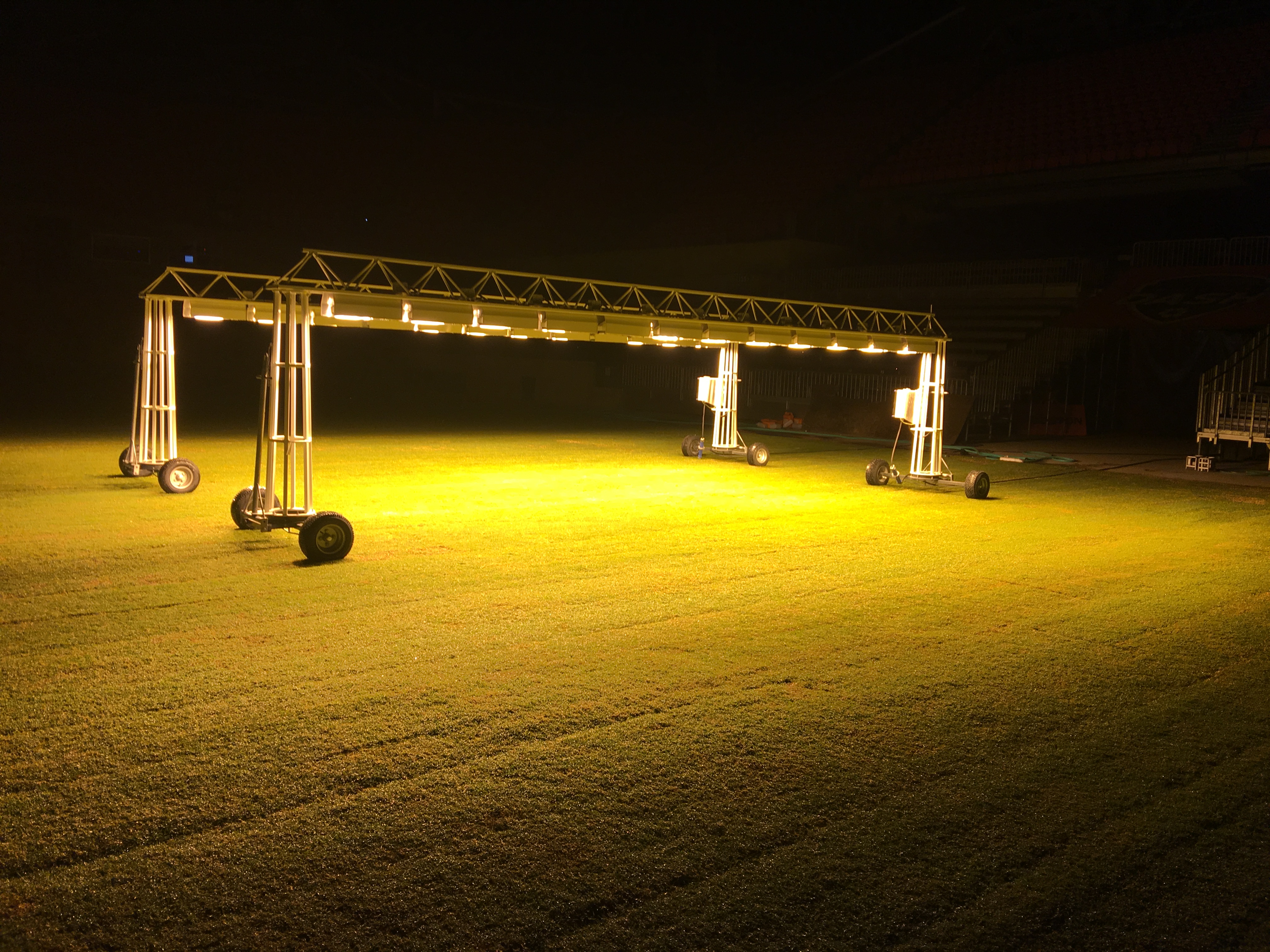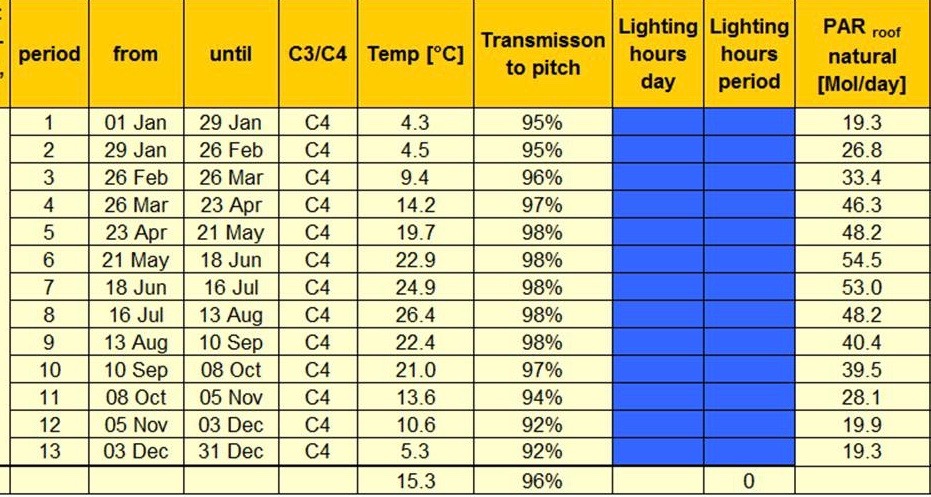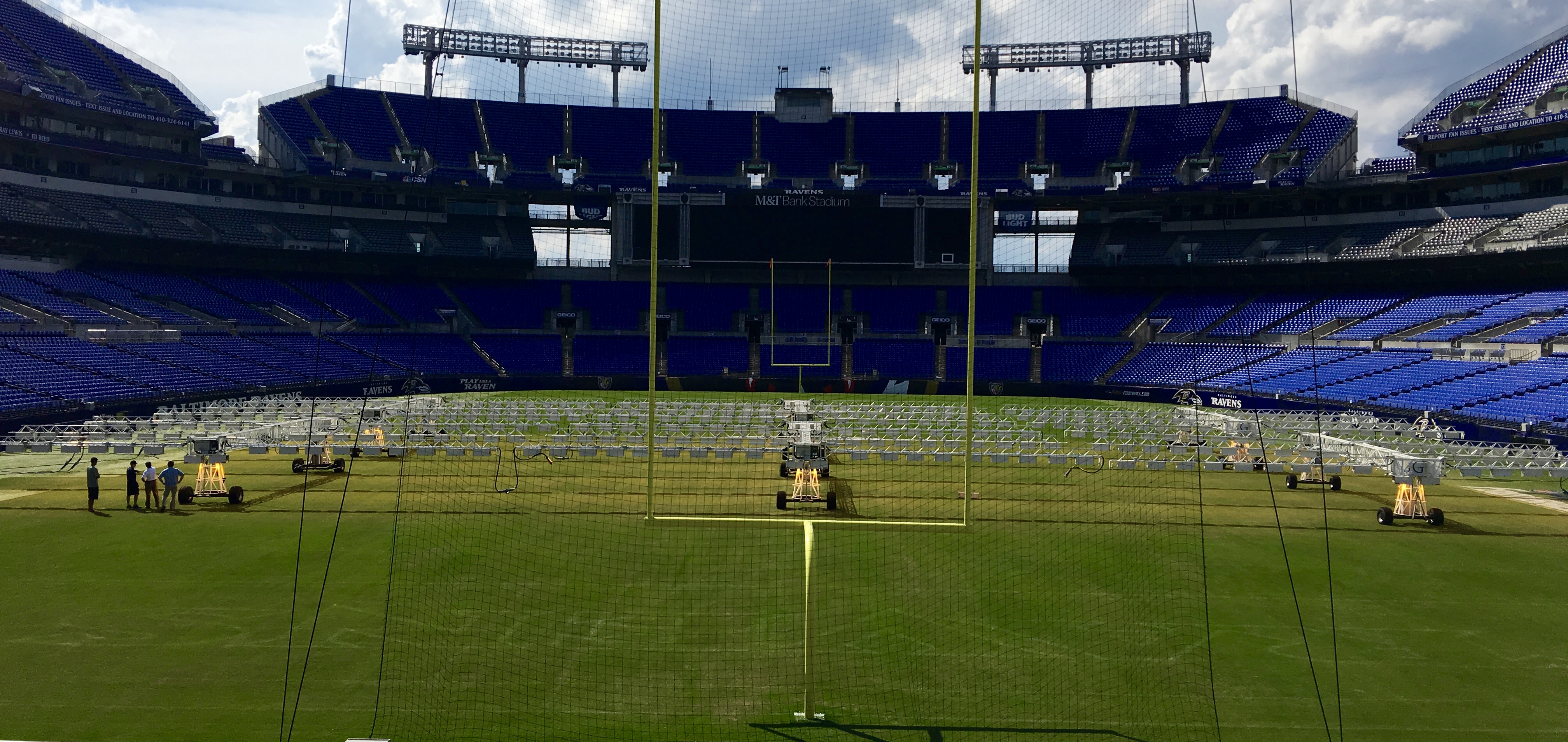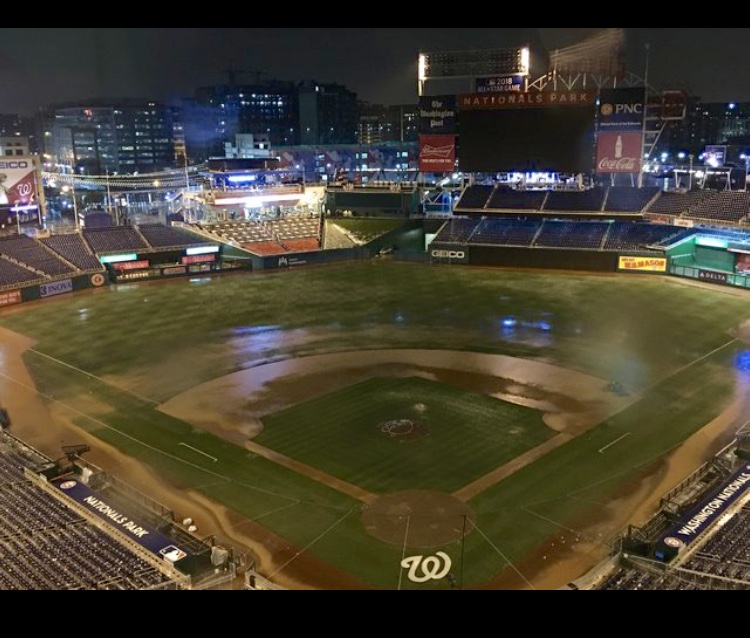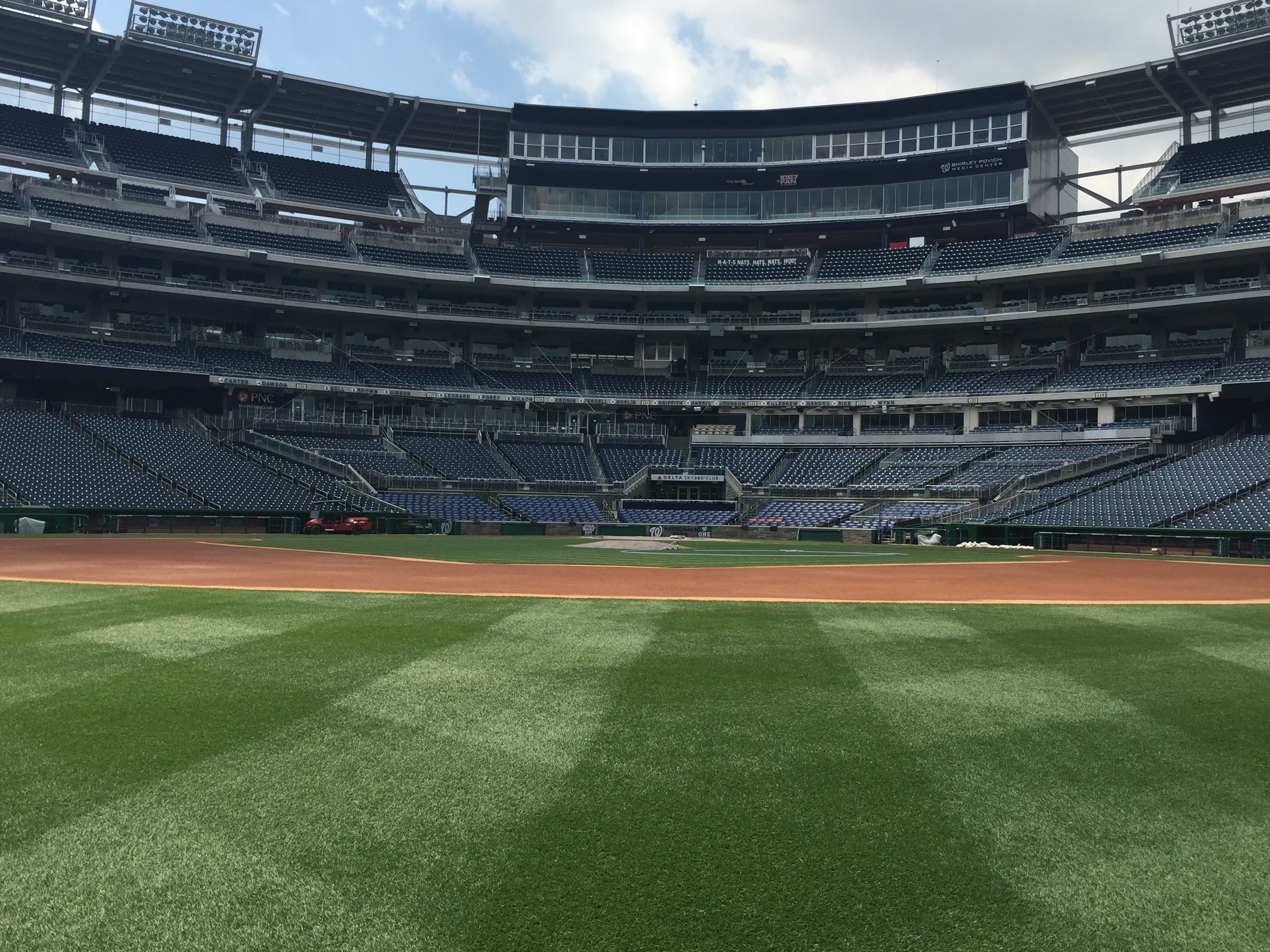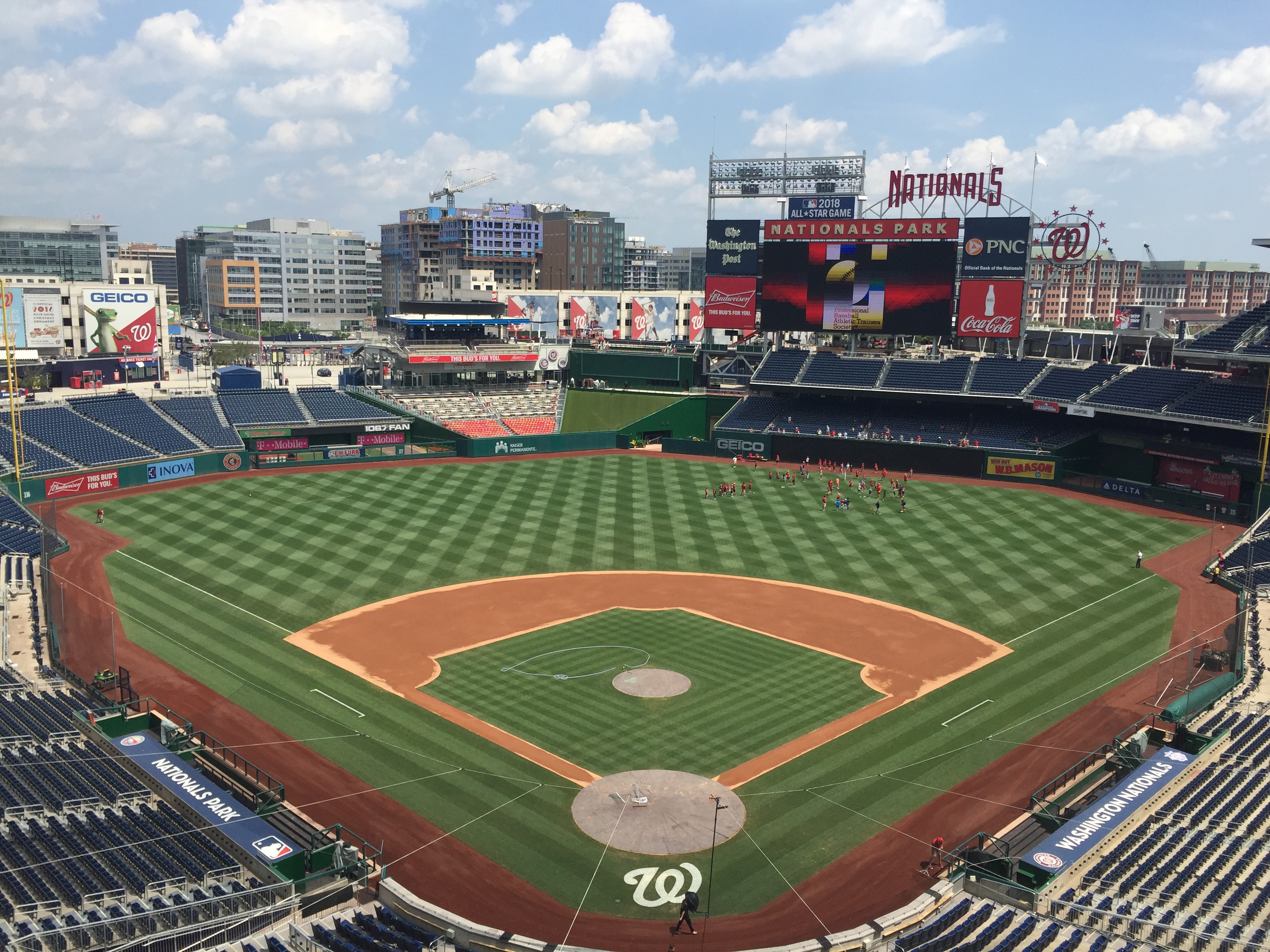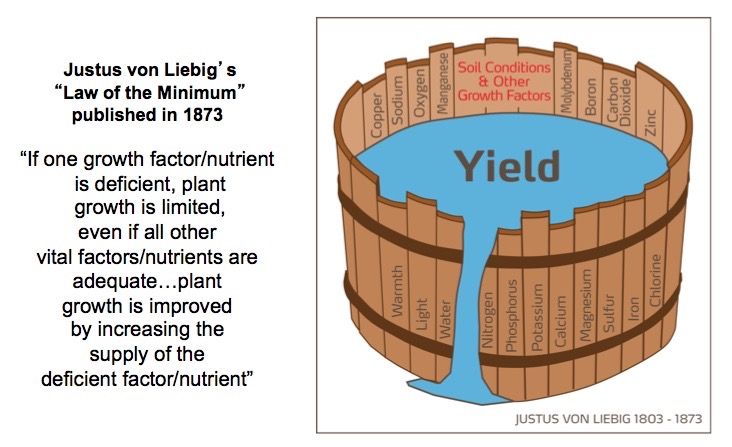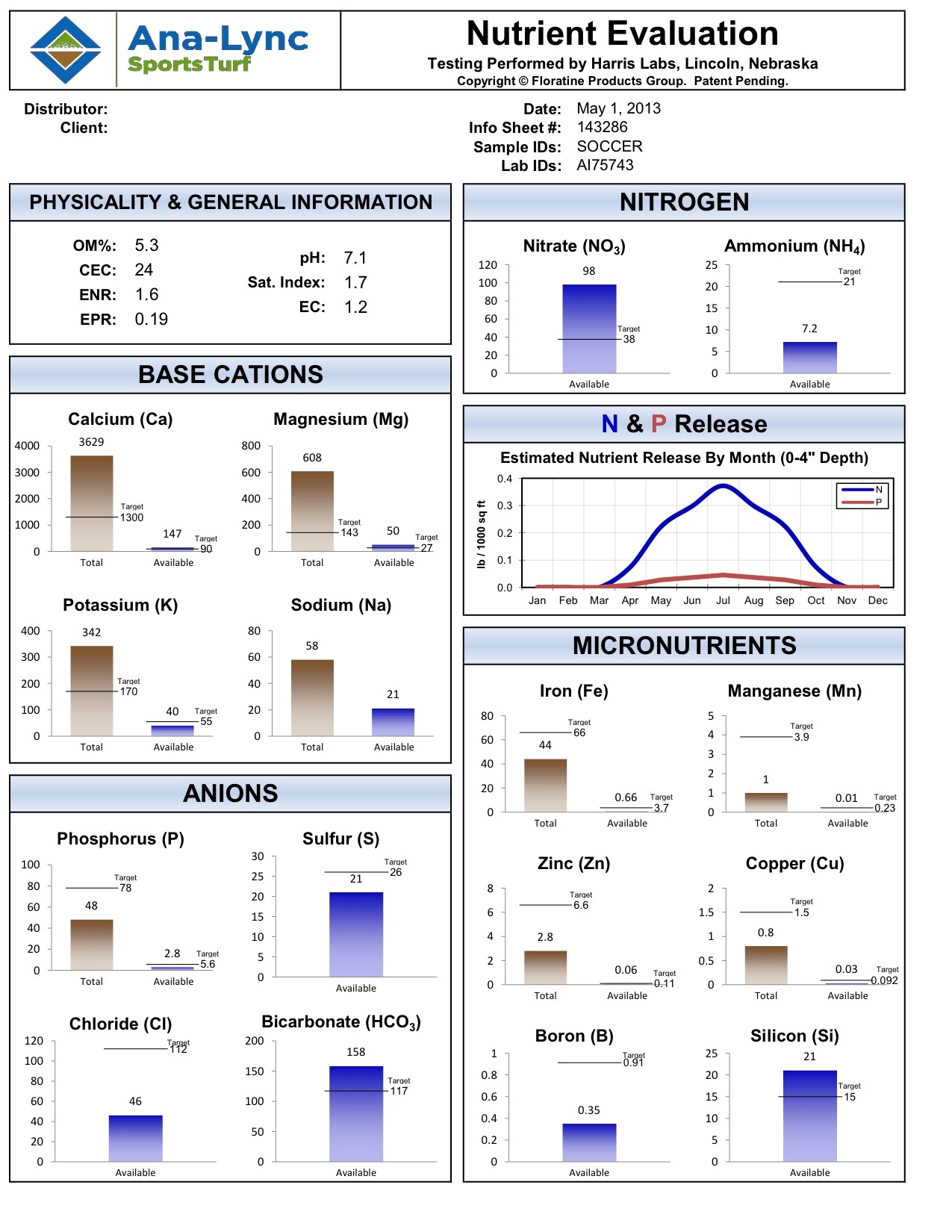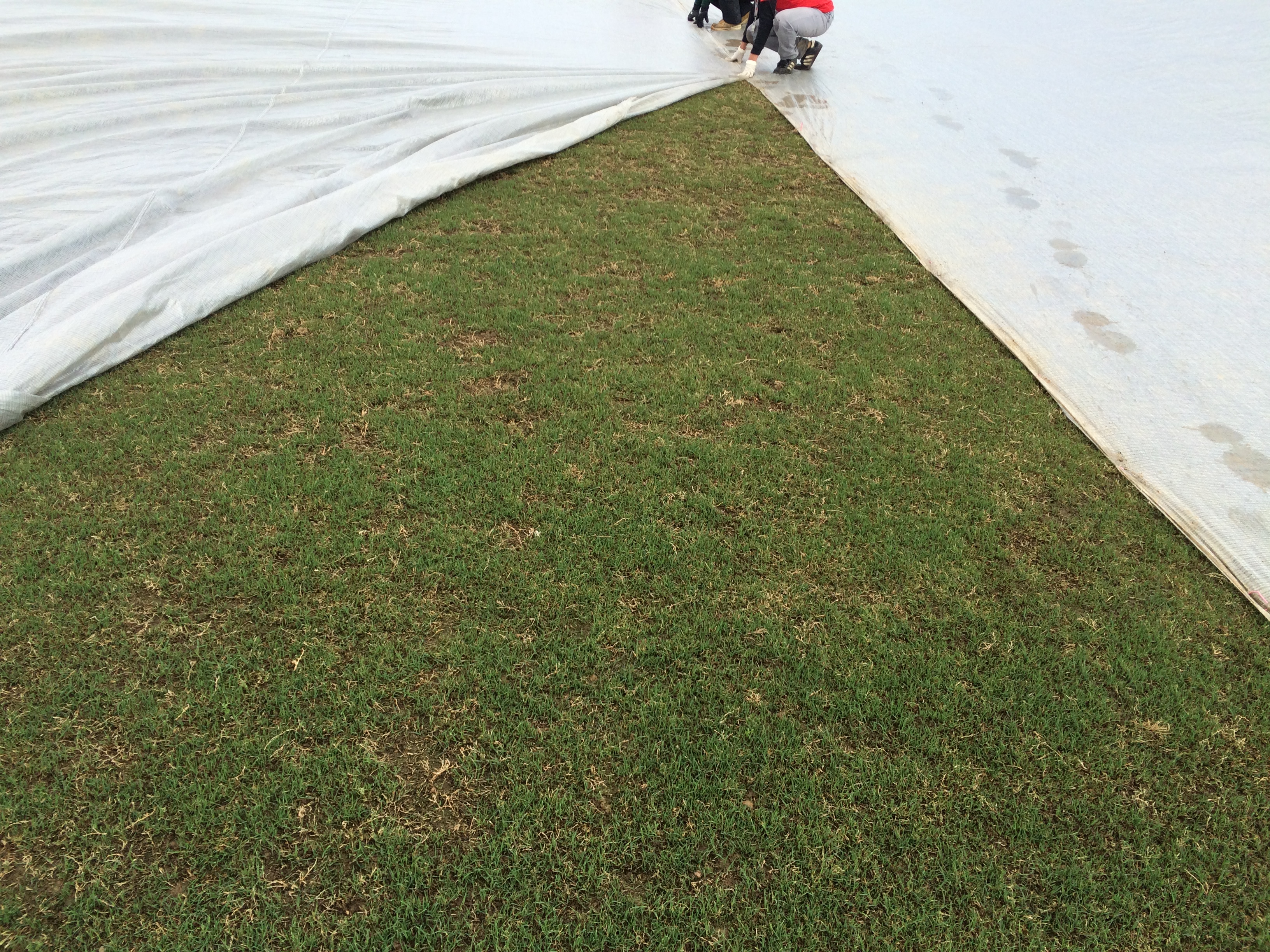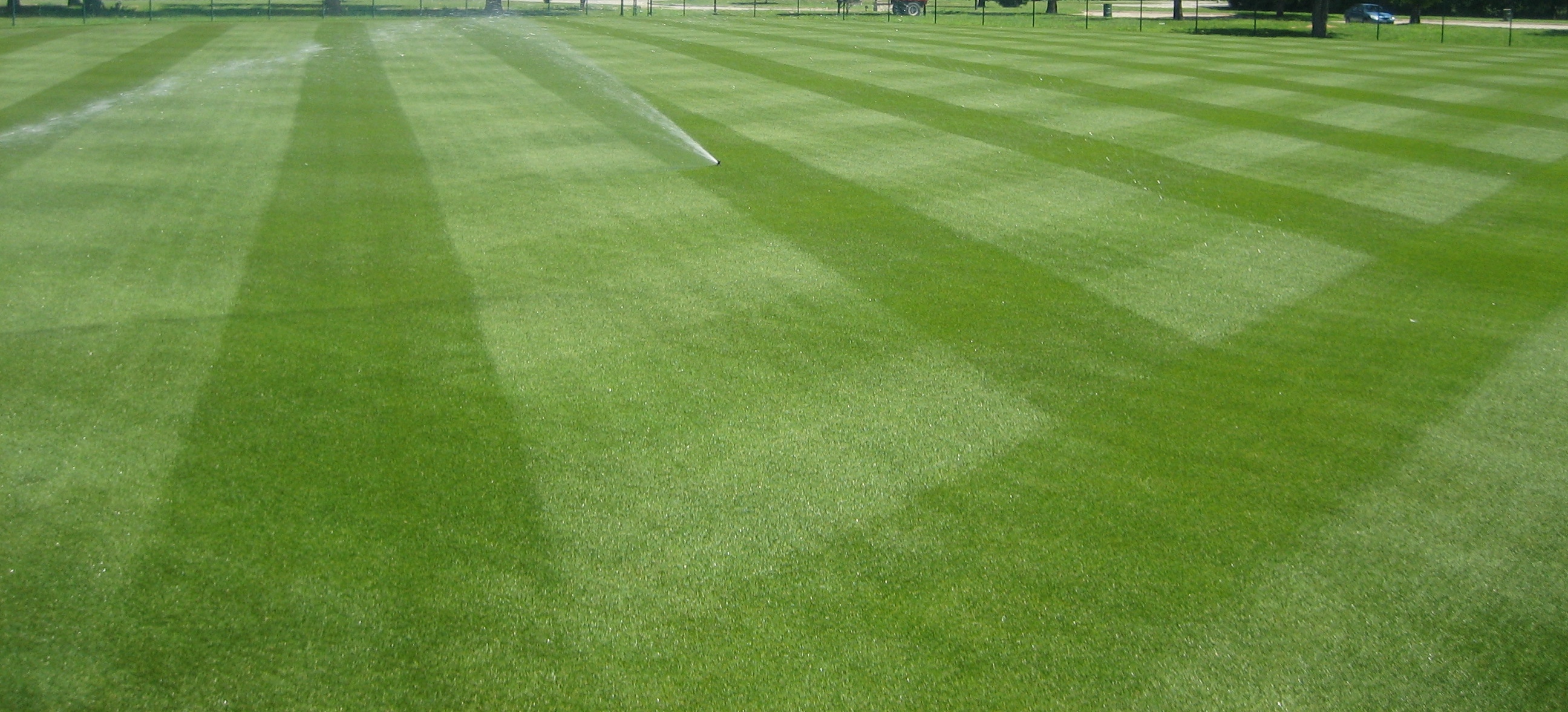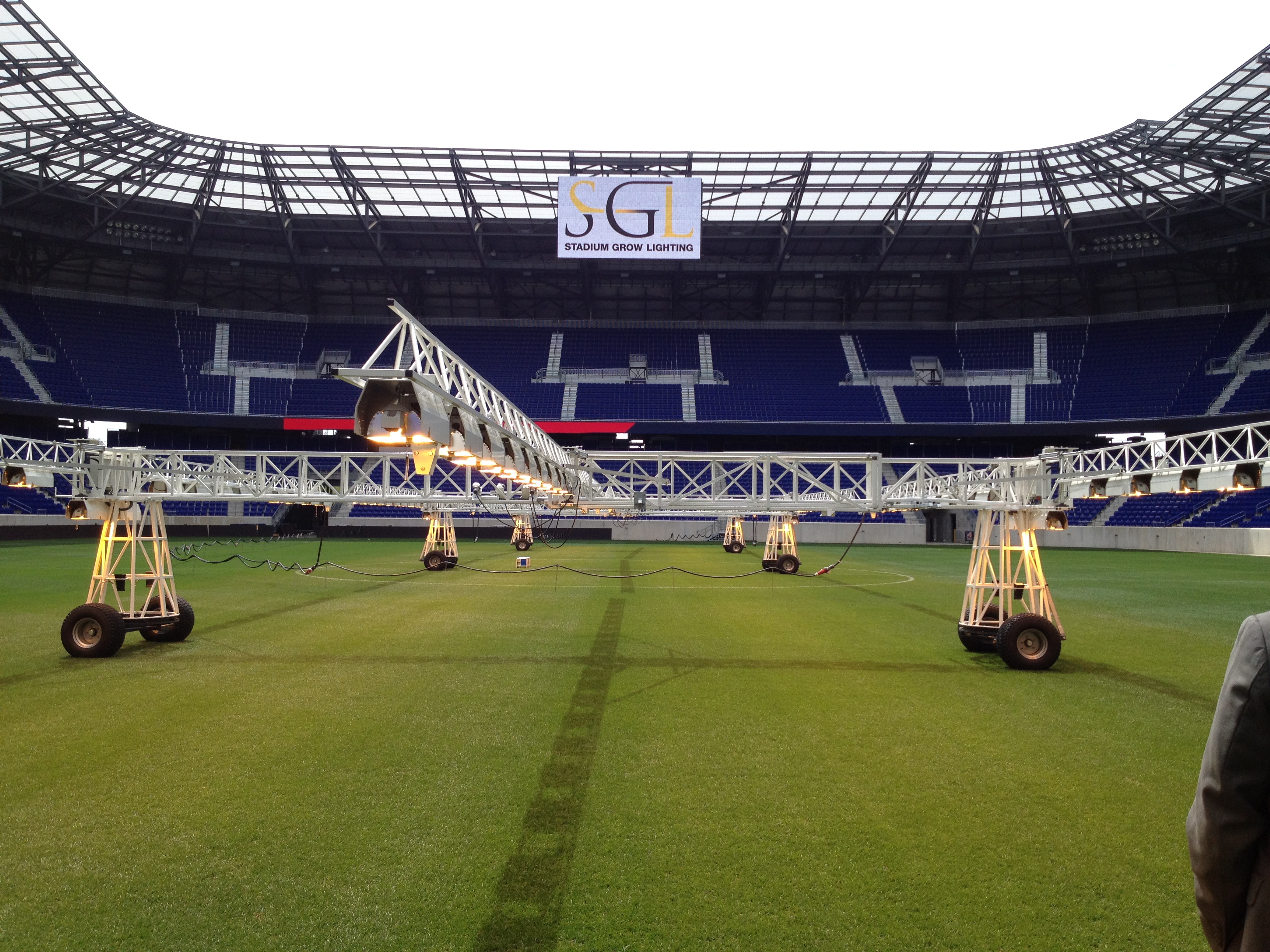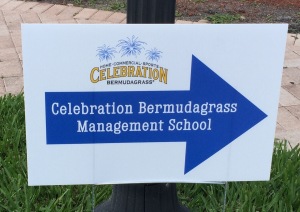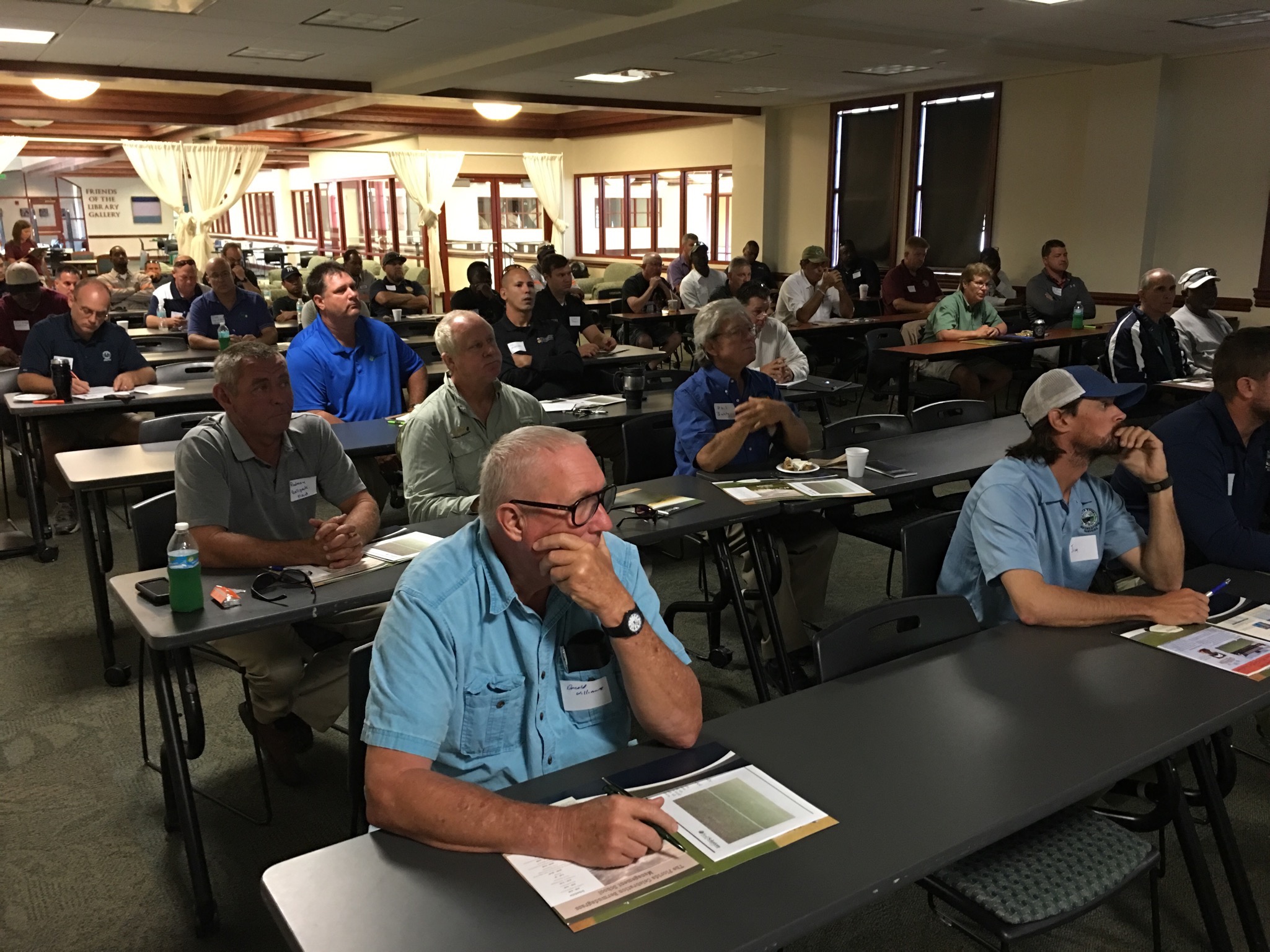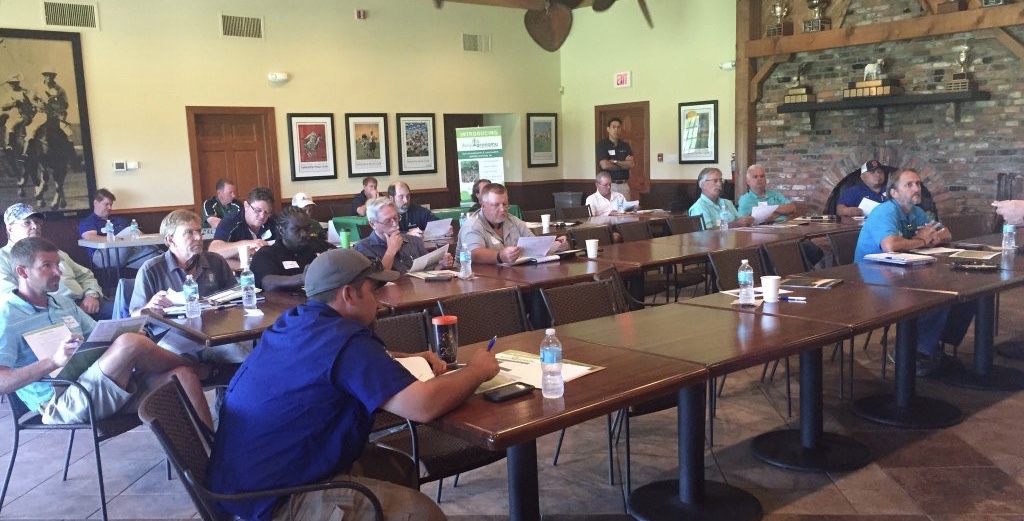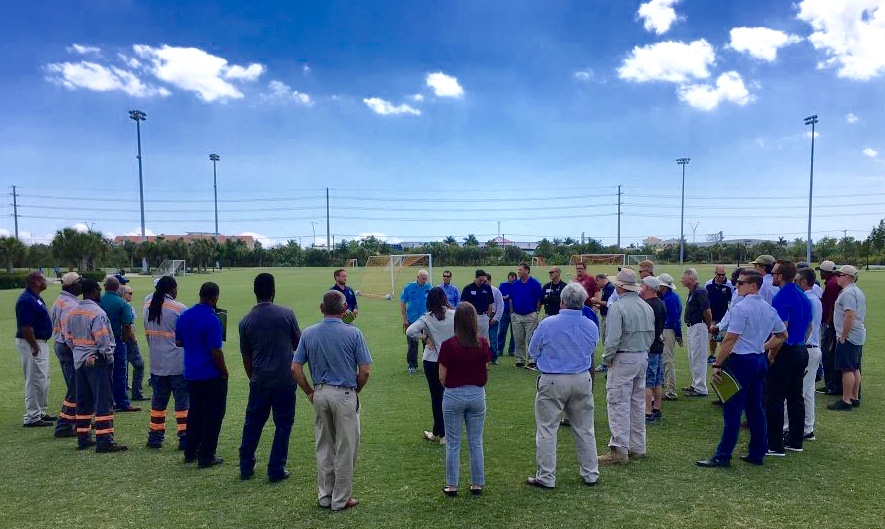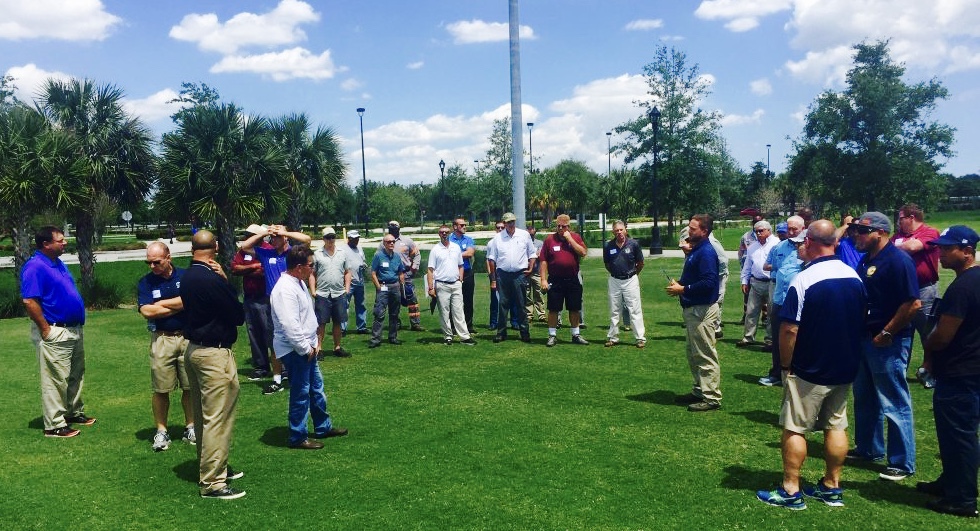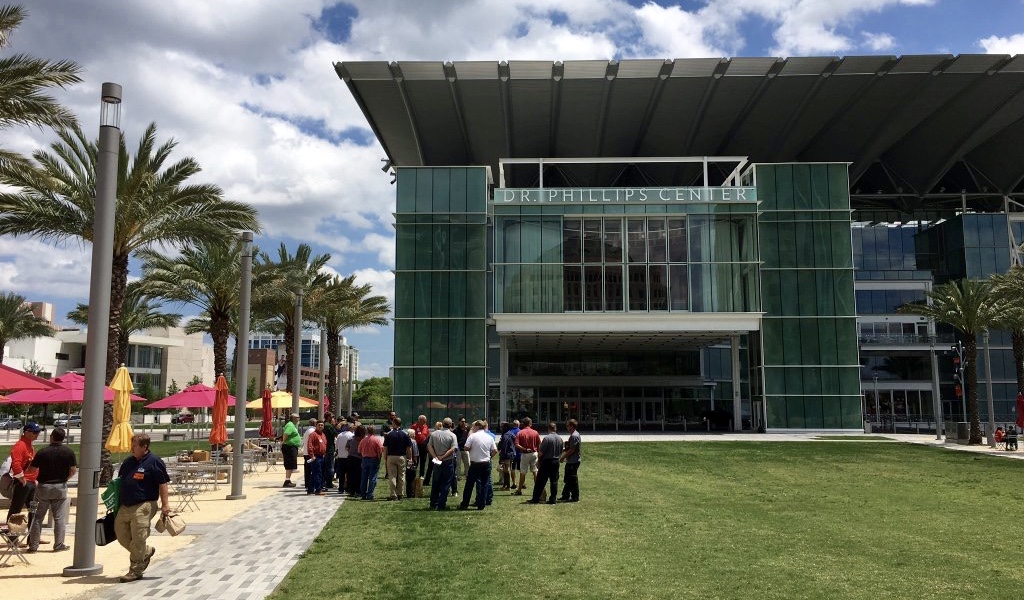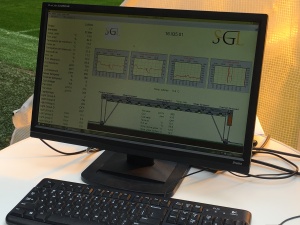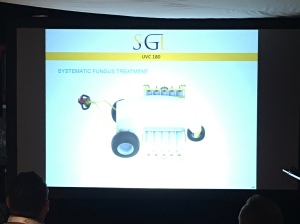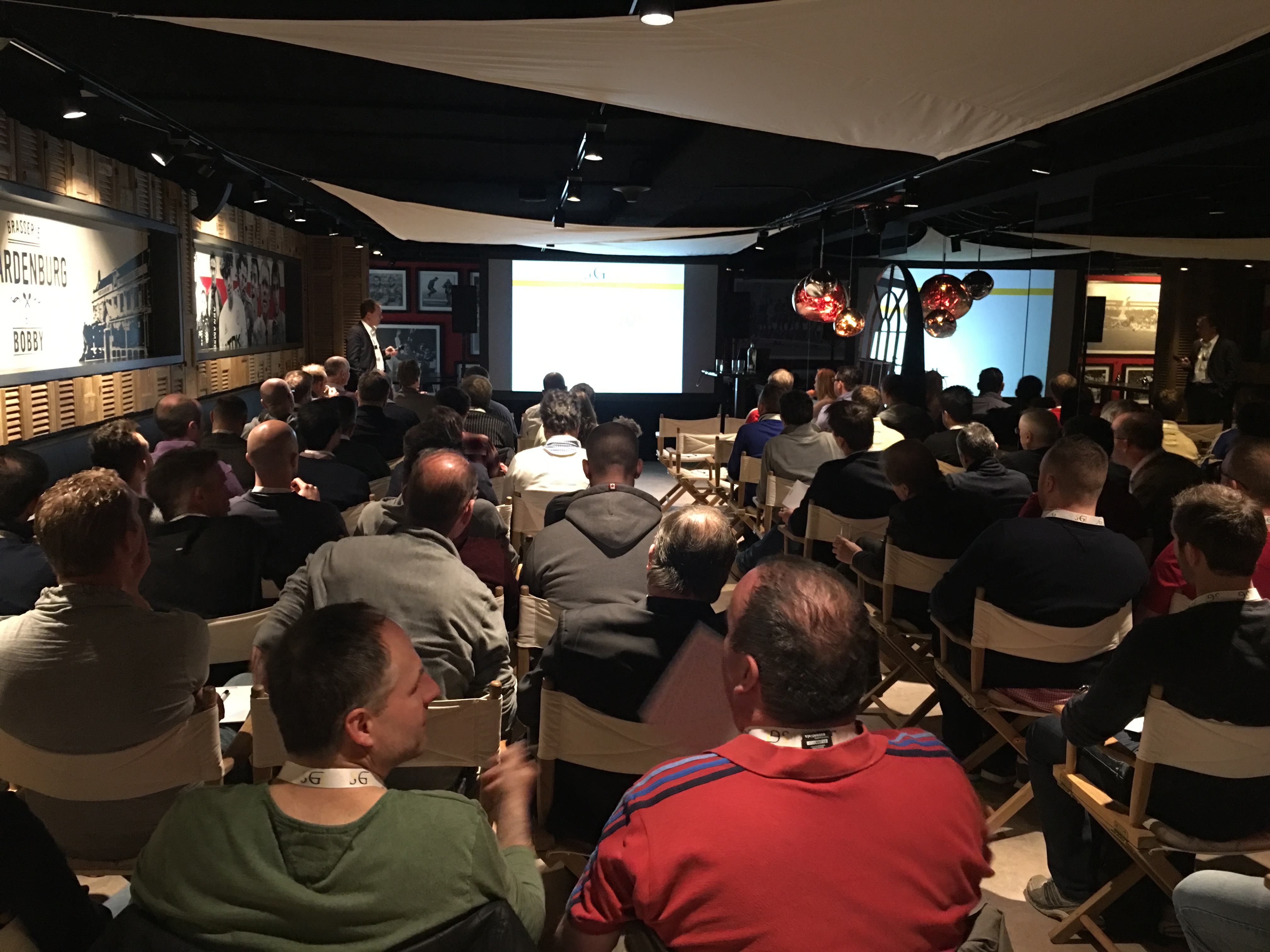As the calendar flips through October, today those of us in the Northern Hemisphere find ourselves only 2 months from the shortest day of the year (properly known as the Winter Solstice). The lower sun angle, shorter days, and cooling temperatures are a reminder that “winter” is upon us. With increasing & / or continued high-use on many natural grass fields during this time of deteriorating Bermudagrass growth conditions, the topic of “extending Bermudagrass growth” multiple times this week. Ideas to prolong Bermuda growth include:
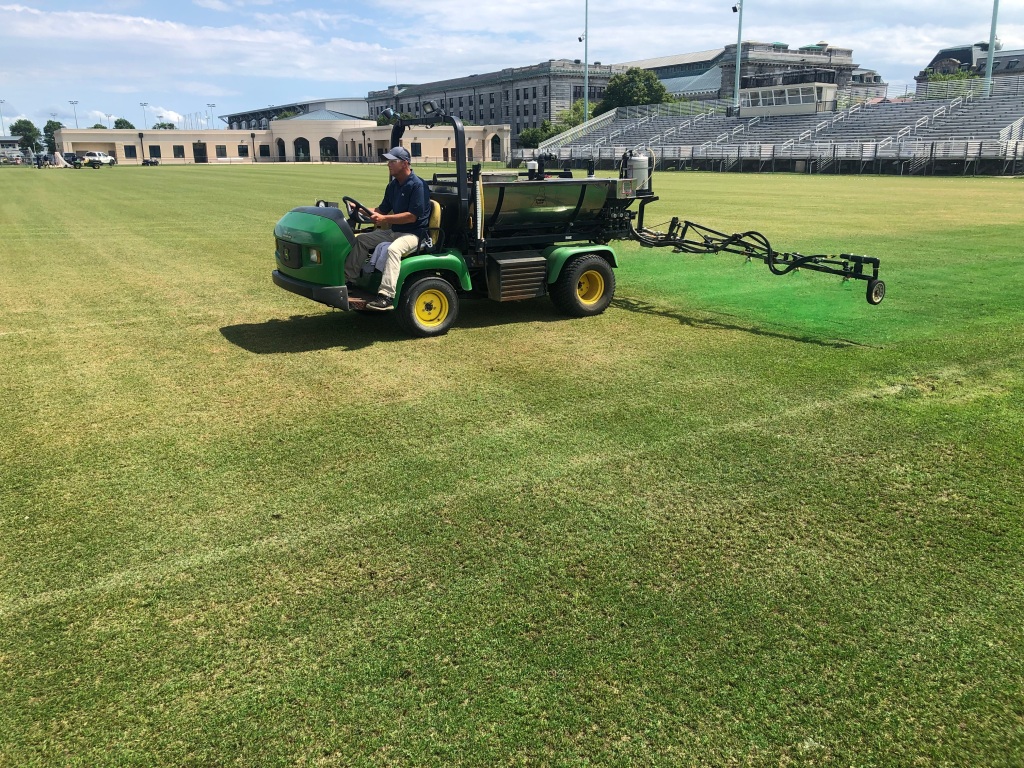
- Spraying green paint / green dye
- Topdressing with sand
- Spreading organic fertilizer or compost
- Utilizing grow covers
Environmental factors for plant growth are sunlight & heat. With both sunlight & heat decreasing in the fall, these “tricks” generate extra heat in the grass canopy in order to encourage / prolong growth. These things are especially impactful on improved Bermudagrass varieties like Latitude 36, Northbridge, & Tahoma 31. These varieties require less heat & less light for growth. The tricks also work on a bit older varieties such as Patriot & Bandera. So the discussions this week have not been focused on IF we can extend the Bermuda growing season… but instead the discussions have been about the consequences of extending Bermuda growth deeper into the fall. Could extended growth be detrimental to Bermudagrass health? Could it impact (slow) spring green up?
Answer? YES. Prolonging or promoting Bermudagrass growth through the fall / into the winter can be detrimental and / or hurt spring green up.
Why? With lower sun angle & decreased sun intensity combined with less hours of sunlight during the shorter days, photosynthesis (produces energy) can not keep pace with prolonged growth (burns energy).
Backing up a few years, we explored this Bermudagrass growth topic in a range of posts on this blog. “Let There Be Light” & “Let There Be Light Follow Up” discussed Bermudagrass light requirement and the impact of decreasing natural light from the sun in the fall season. By October, the sun does not produce enough light to sustain efficient Bermudagrass photosynthesis and the grass slows down. Temperature change then follows to fully induce dormancy. The spring after those initial posts, “Transition Zone Bermudagrass Out of Gas This Spring” looked into/ shared lessons we were learning during spring and early summer Bermudagrass struggles following a mild winter. Bermudagrass didn’t go into full dormancy with the mild temperatures. But instead of mild being a positive, lack of dormancy was a negative because the green and growing Bermuda didn’t have the needed light amounts for efficient photosynthesis. Carbohydrate / energy reserves in the Bermudagrass plants were burned up and the grass could not give a spring surge for growth and recovery.
Those discussions lead to the creation of an on-field trial that fall at Duke University on Latitude 36 Bermudagrass. “Supplemental Light & Bermudagrass” introduces that trial. The stimulation for that trial came from similar experiences & questions to what we are exploring now.
The results of that trial provide great information to help in our decision making now on if or how much to push fall Bermudagrass growth. These slides give a snap shot into the trial results:
To get the information needed for the discussion of extending Bermudagrass growth, the summary on the last slide (just click on the last circle to skip all the way to the end) provides insight.
- The area that received supplemental light ONLY had the best roots & the best strength. Why? The amount of light added, in combination with the sun, exceeded 25 mols / day (the amount of light that photosynthesis can be fully efficient). And with little extra heat, the grass never grew aggressively to burn the energy that was being stored. It DID grow some – as it grew enough to where the paint grew out / was mowed off BEFORE the area w grow covers only.
- The area that used grow covers ONLY had the worst roots & the worst strength. Why? Heat was stimulating growth that was burning energy. But with a) low light conditions of the winter + b) the grow covers blocking 50% of the already limited light… the plants burned up their energy reserves (roots).
SO WHAT? What does that have to do with this discussion?
The trial teaches us or reinforces 2 big things:
1. Bermudagrass goes dormant in the fall / winter / spring not just because of temperature, but also because of reduced light levels (its naturally protecting itself)
2. Generating heat will help stimulate Bermudagrass growth later into the fall / winter. The trial used grow covers. Green paint / dye will do similar (up to 7 degrees increase of canopy temperature on a sunny day).
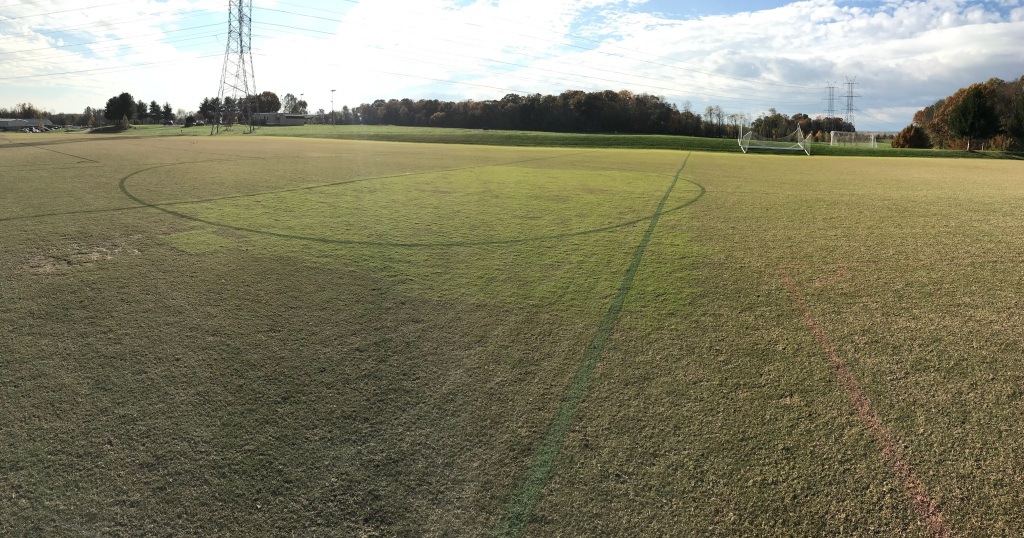
So if / when manipulating temperatures to extend Bermudagrass growth in the fall / winter, keep in mind that the energy being burned with growth is not being replenished with natural light. The recommendation made to our clients is to utilize paint / dye. It stimulates a bit of extra growth for 2-4 weeks, depending on the temperatures & sunshine. Yes, it will block some light too – that is something we are doing more research on (assumption is it is less than 15%). If you need more significant growth, grow covers will do the trick! But with them stimulating significant growth while also blocking approx 50% of available light, don’t use them A) too much, or B) for too long because at some point by mid-December, the grass needs to be able to go “full natural” with its growth cycle. From I-70 from KC to DC & north, its even more important for the Bermuda to go fully dormant in preparation for the cold winter. Many use grow covers are used for winter protection – and they work. But we typically recommend waiting until the soil temperature drops into the middle 30’s before the covers to put them on to stay until late February / March.
Additional New Information: With multiple clients / facilities utilizing under soil heating & / or supplemental lighting, we have learned much additional about Bermudagrass growth since the trial
- Northbridge, Latitude 36, & Tahoma 31* Bermudagrass can / will to grow when soil temperatures rise above 55 F. This is why it is important to let soil temps drop into the 30’s before putting covers on during the winter for a long period of time. If the soil temperatures come above 55 F, the plant will be burning energy. Also why it is important to continue to feed the Bermuda in the fall until the soil temperatures fall. Ca & K & even low rates of N in the fall will help with energy storage in preparation for winter * Tahoma 31 is potentially as low as 50 F. (For reference: 419 is 65-70 F)
- These superior varieties of Bermudagrass, when combined with + 55 F soil temperatures, can / will grow when combined air temperatures rise to 110 degrees (example: 70 high, 40 low). That “low” temperature threshold, combined with soil temperatures still higher from summer, is why it is easy to manipulate & extend the growing season in the fall.
Ultimately you know your situation BEST. Utilize soil temperature & air temperature data, in combo with Growing Degree Days & your sunshine forecast to decide what is best for your particular situation. Hopefully some of this information is helpful in the decision making!


